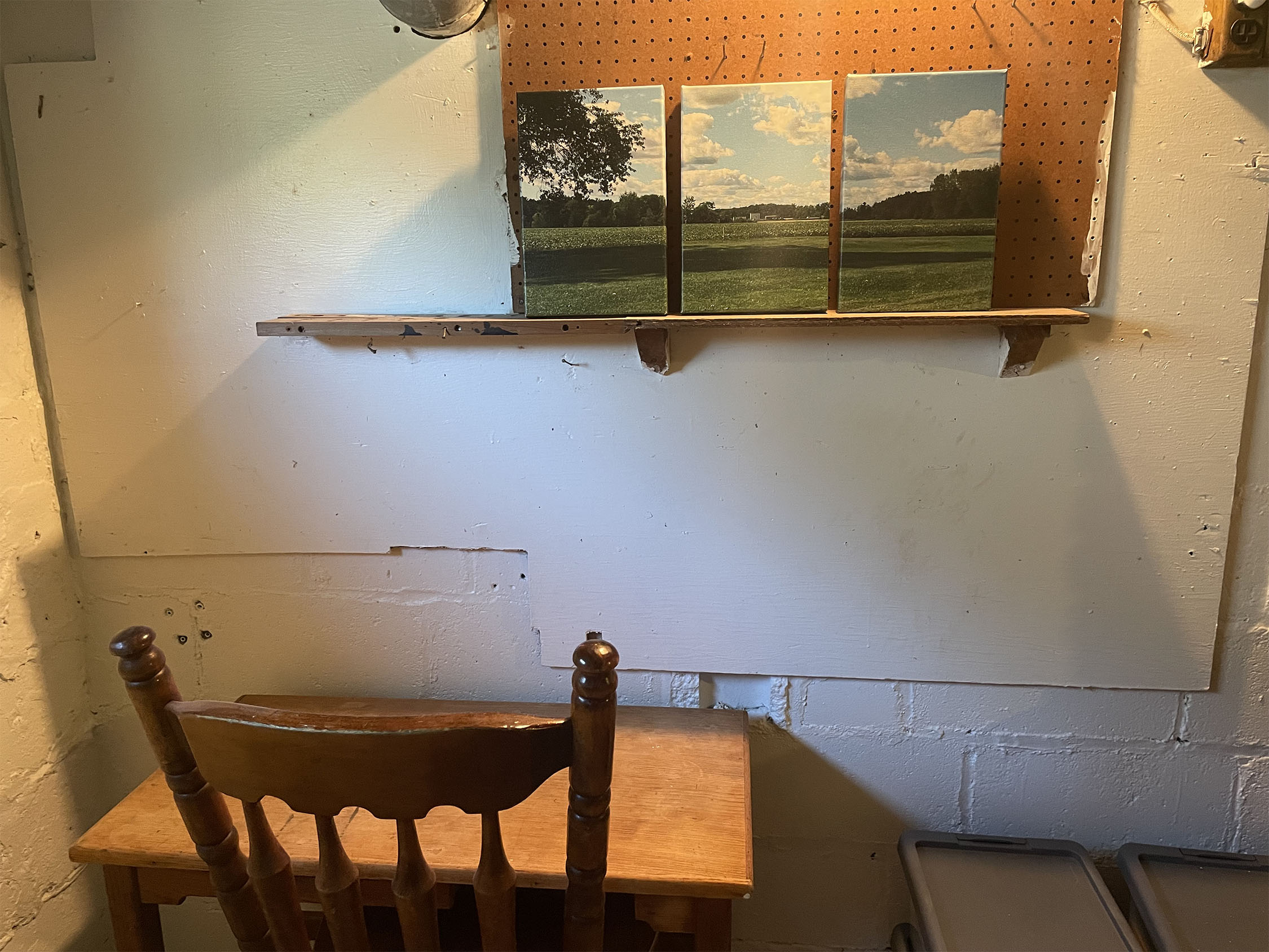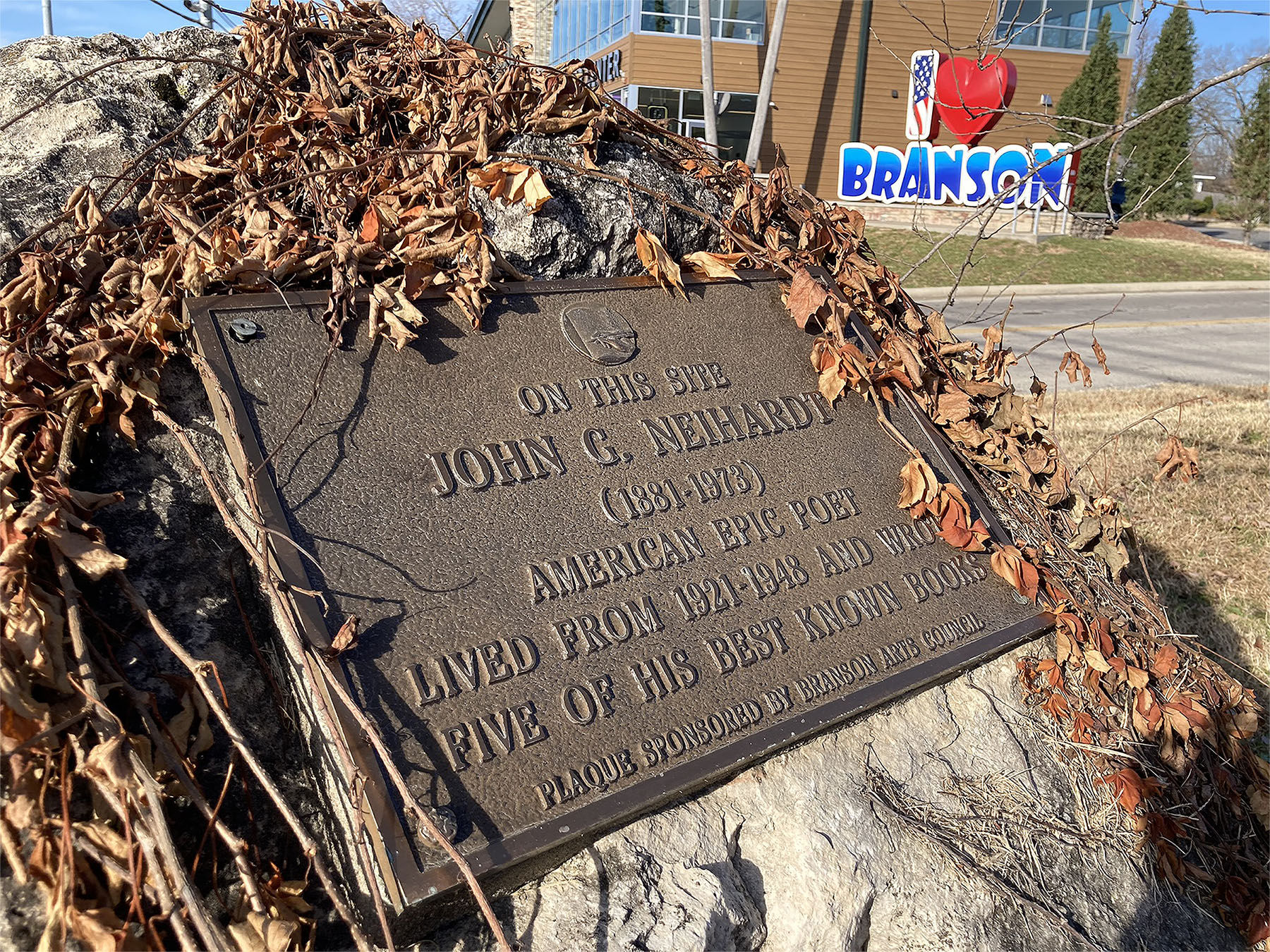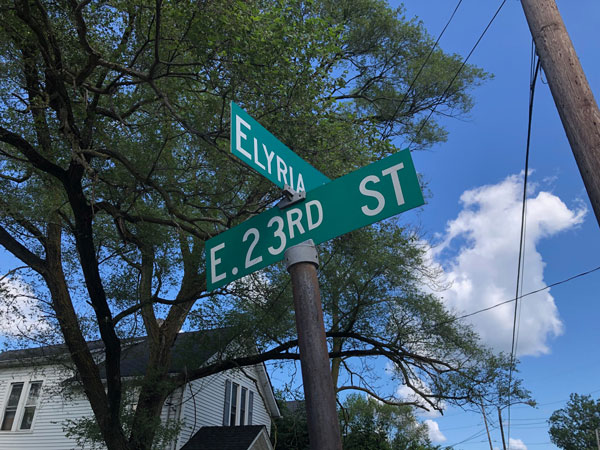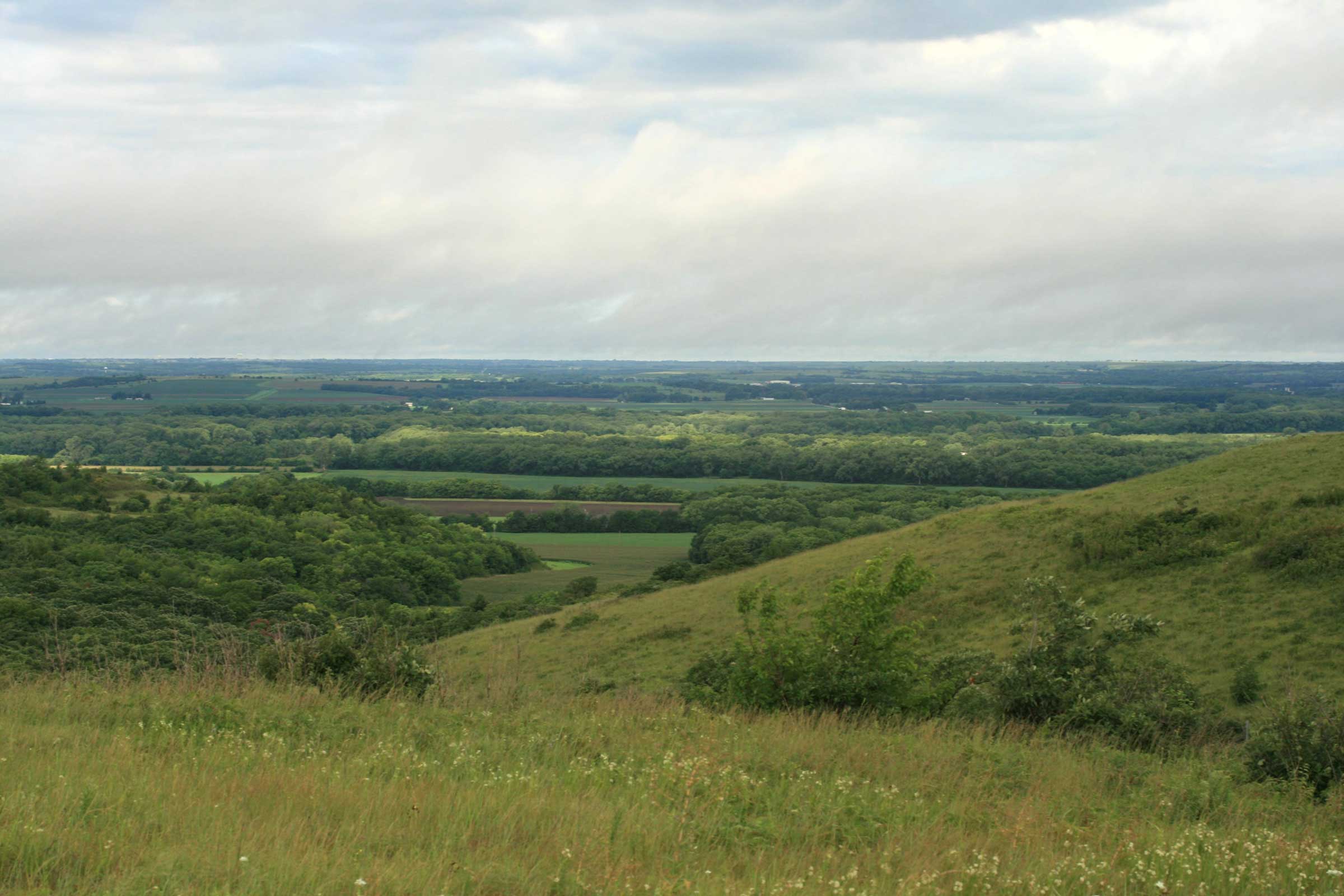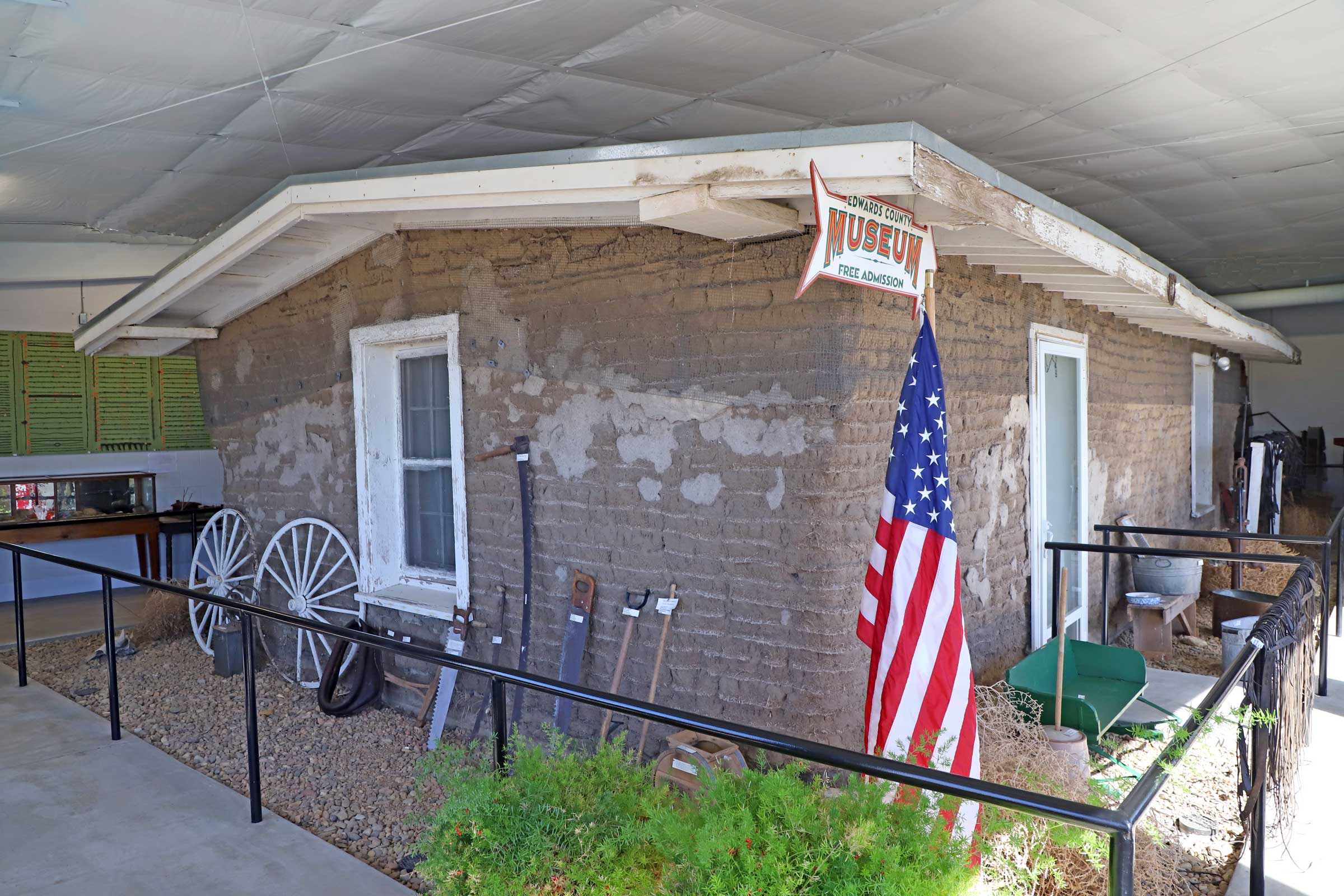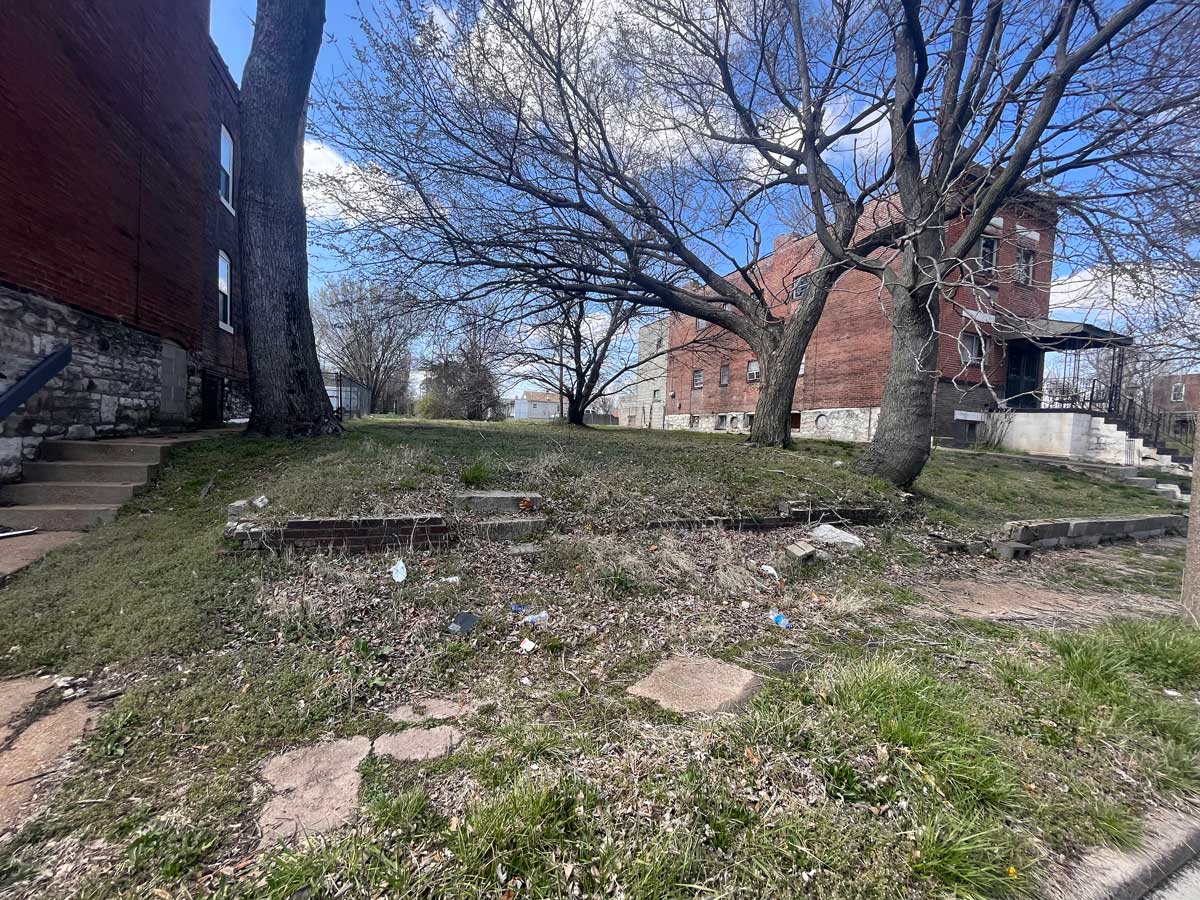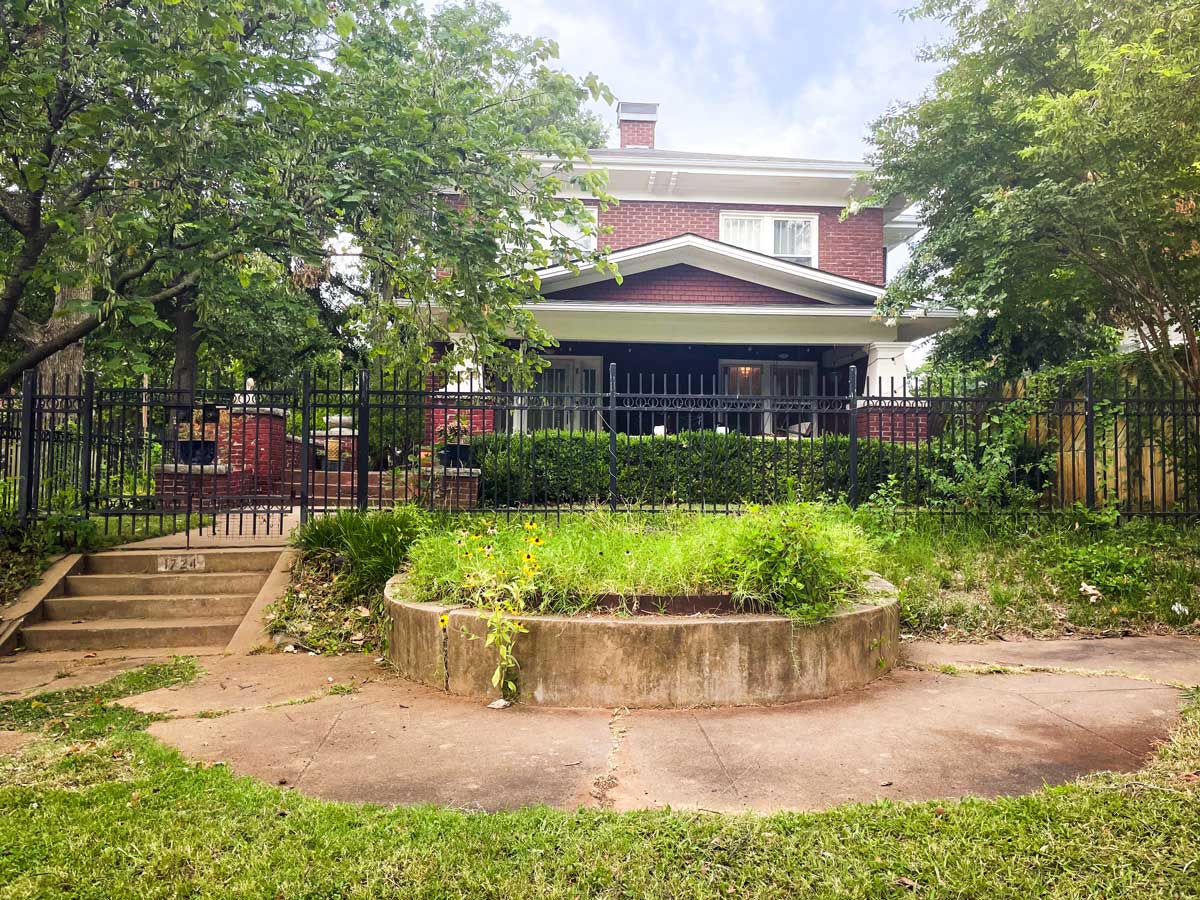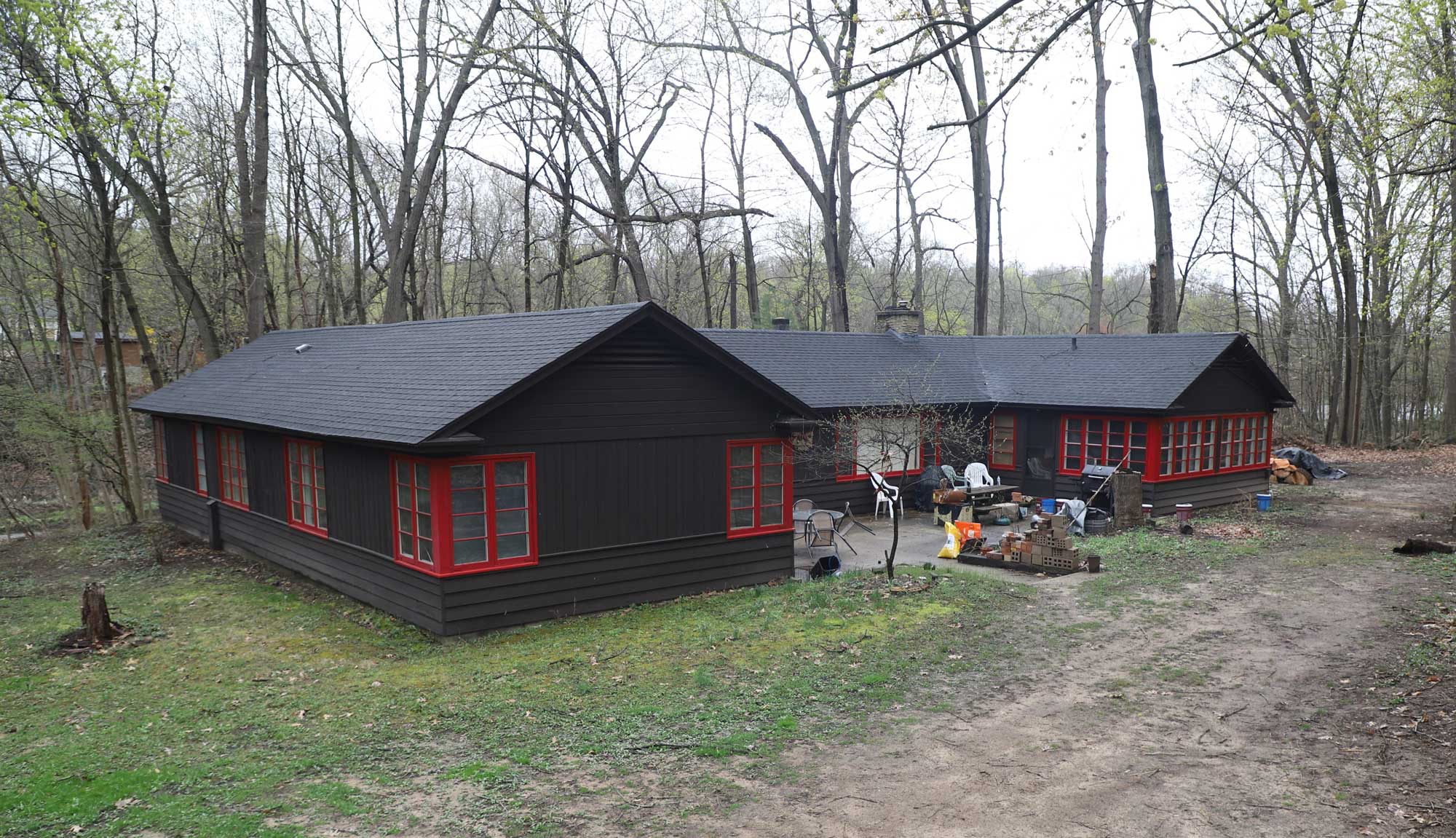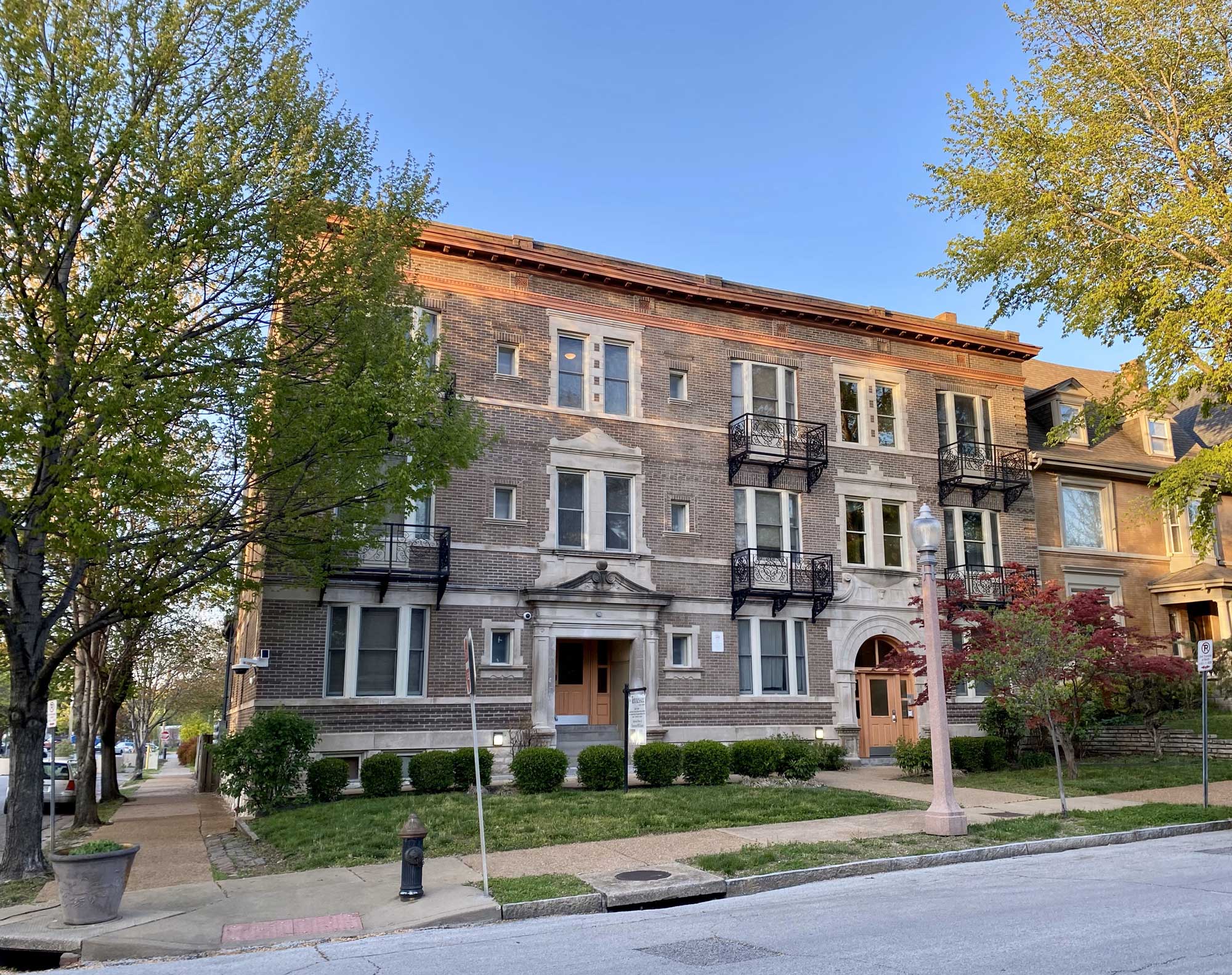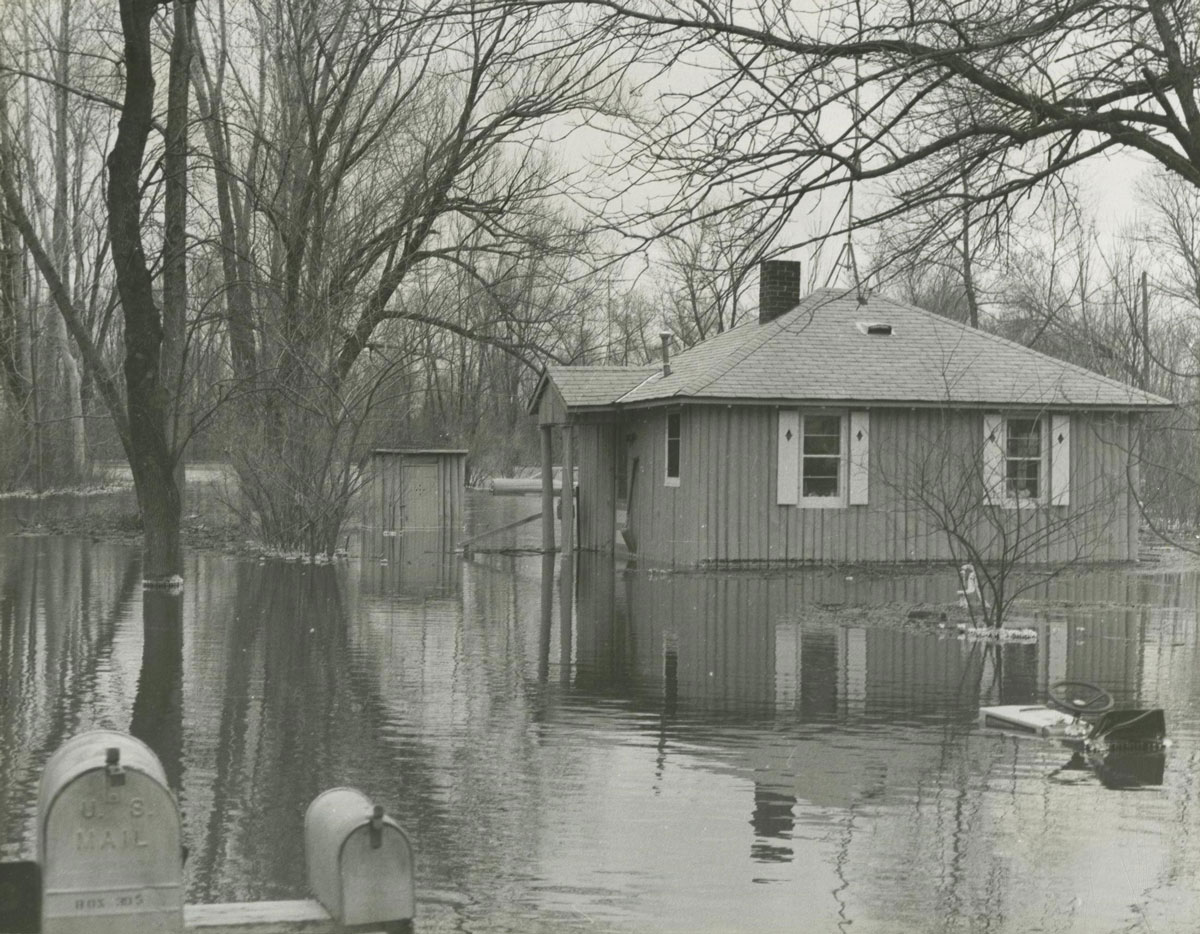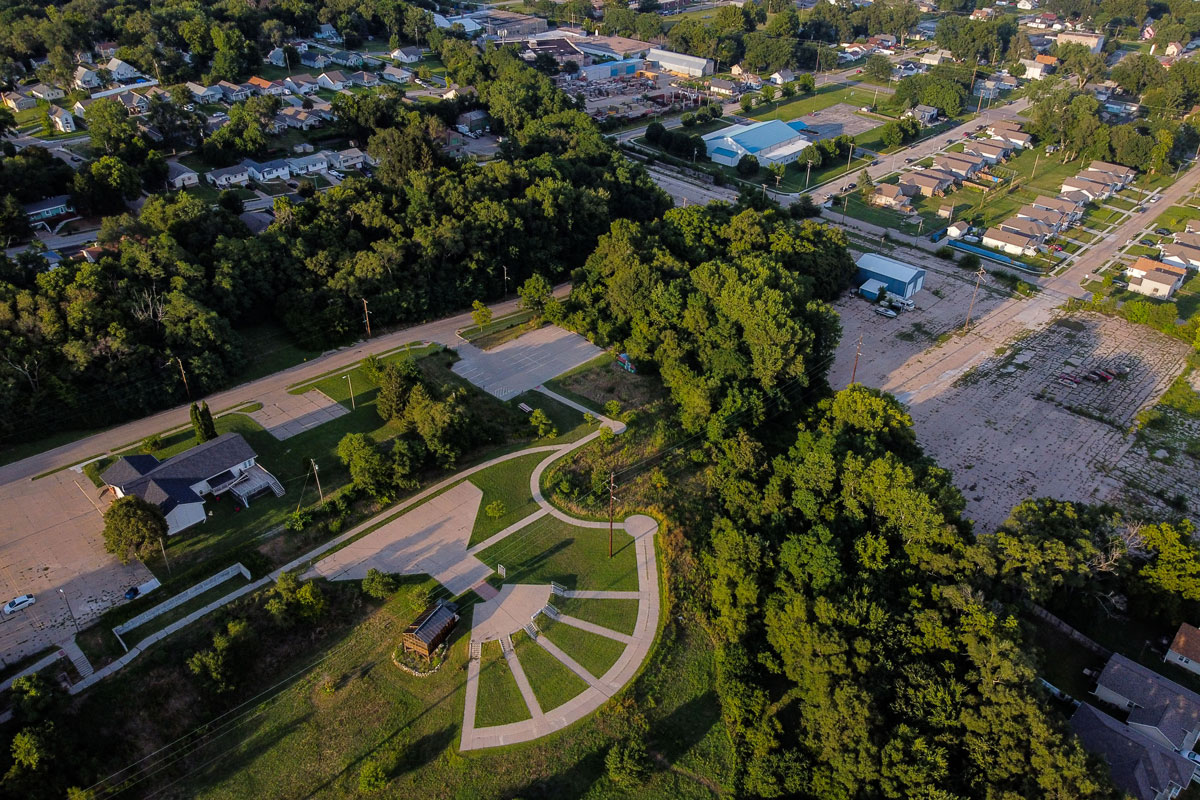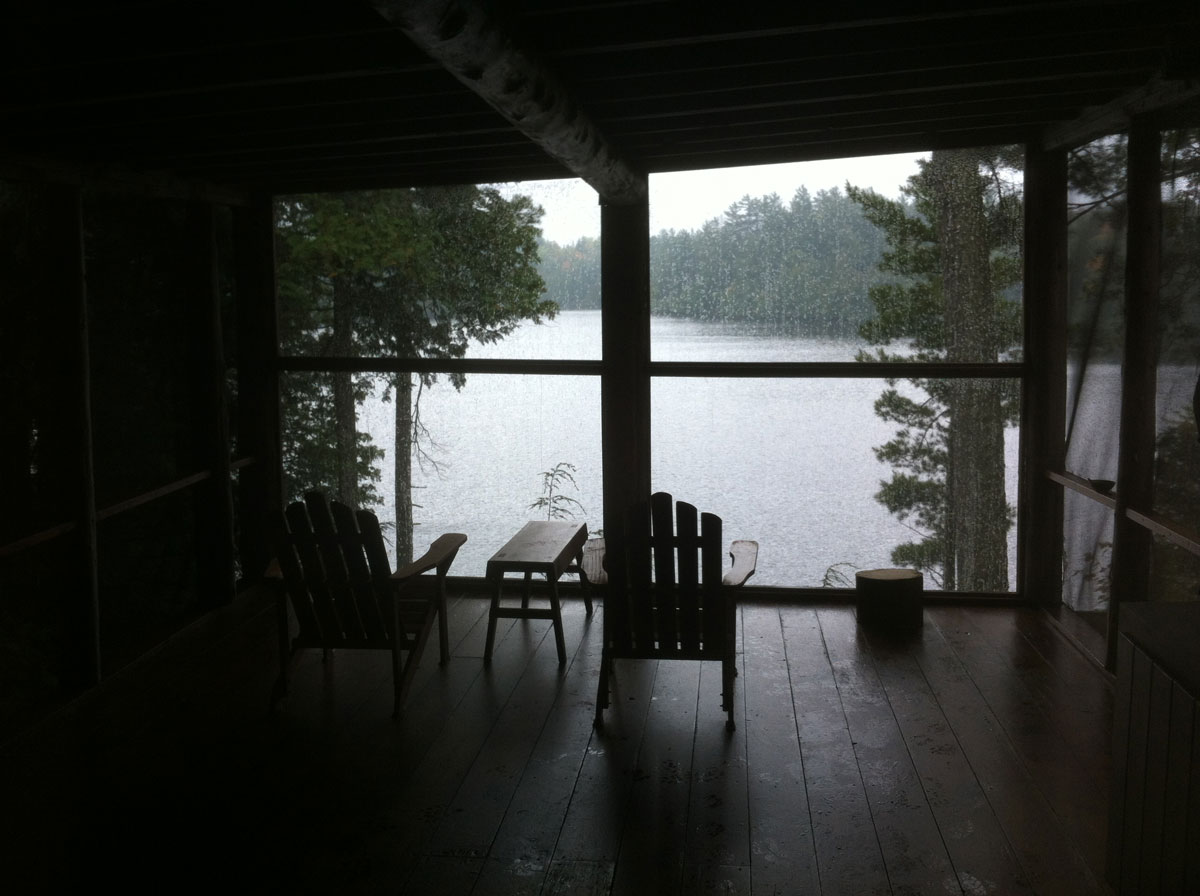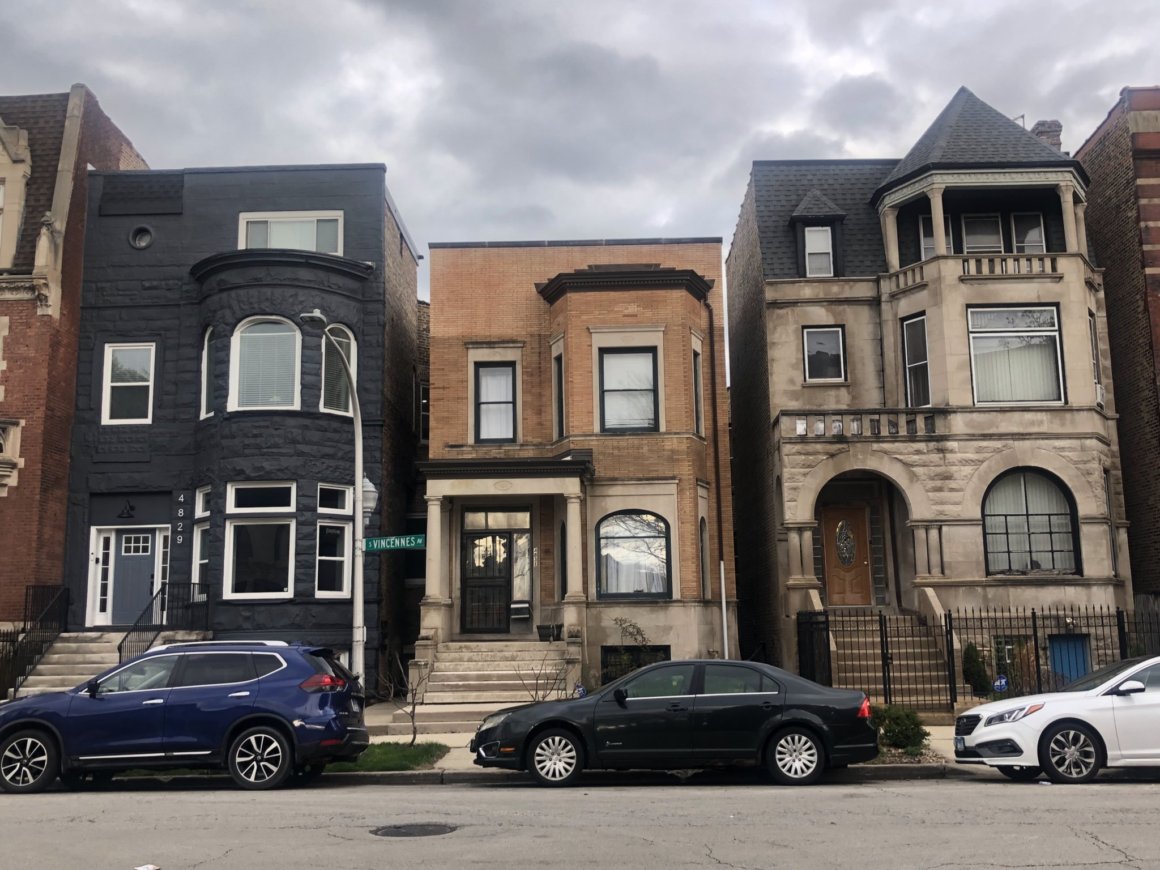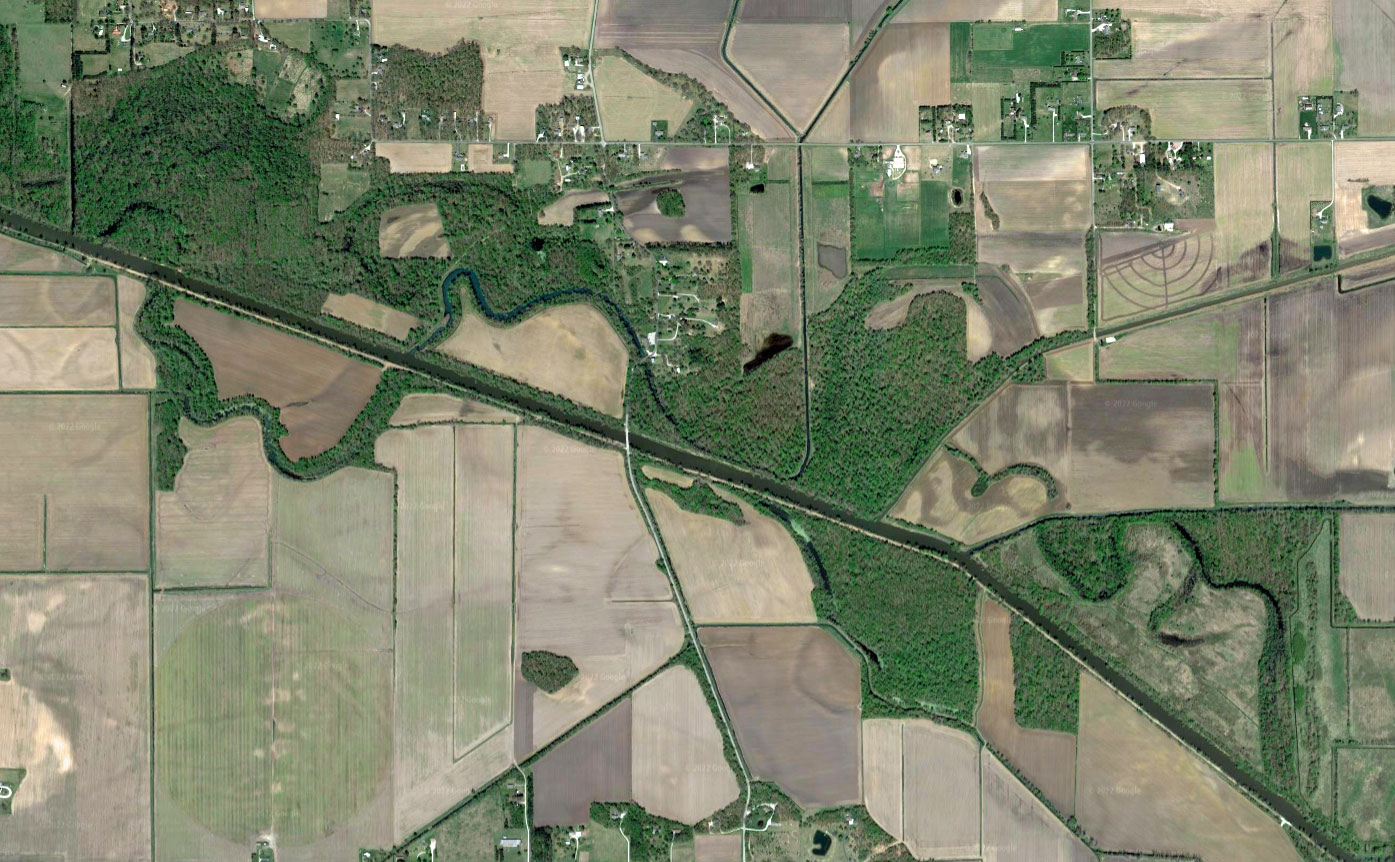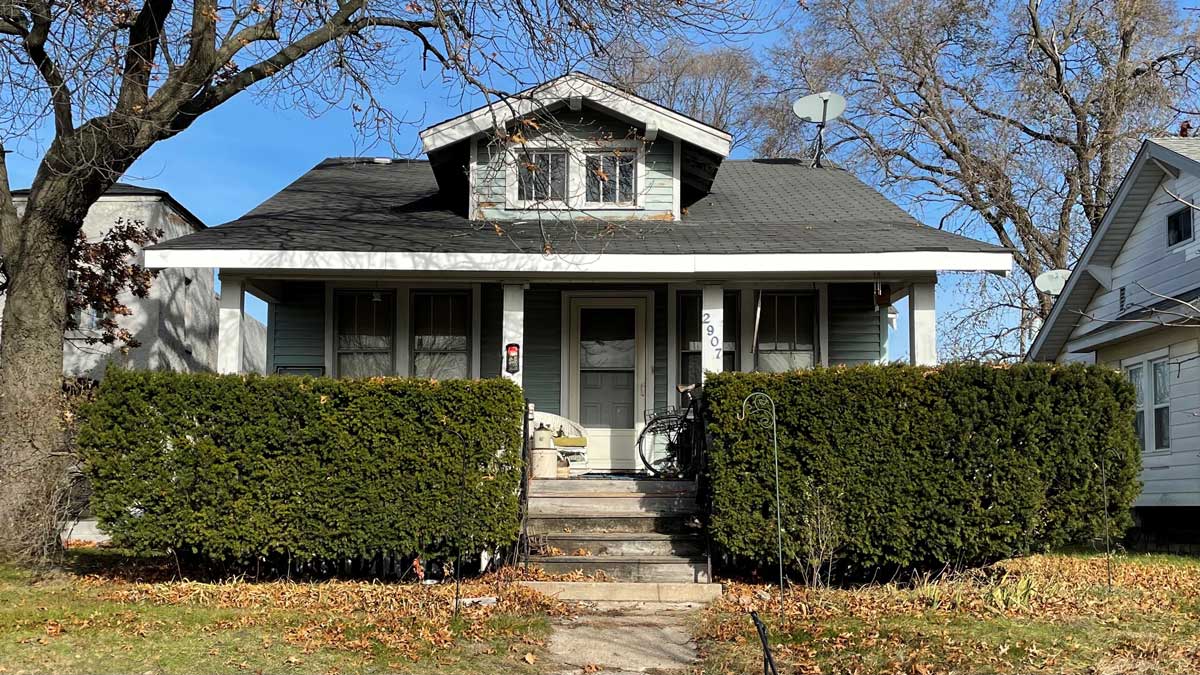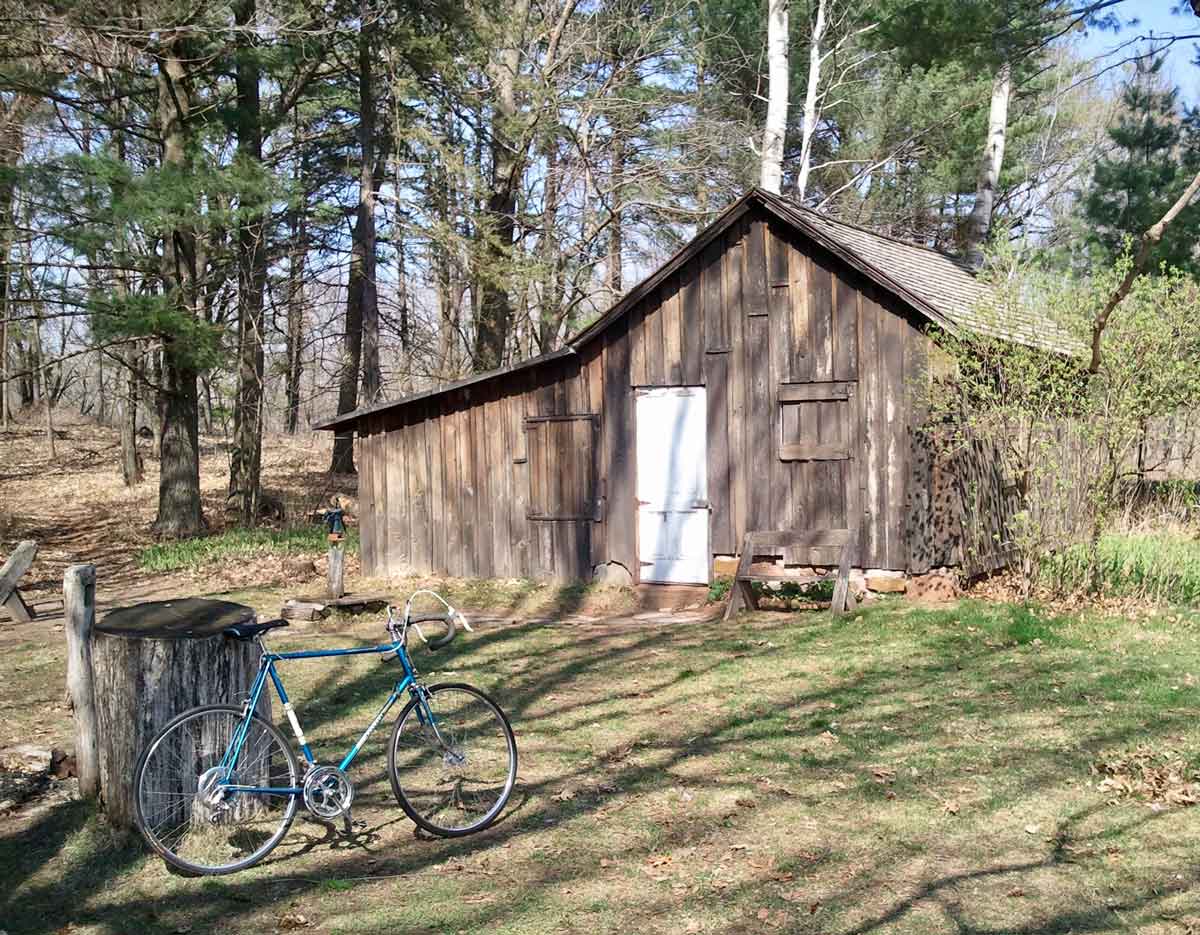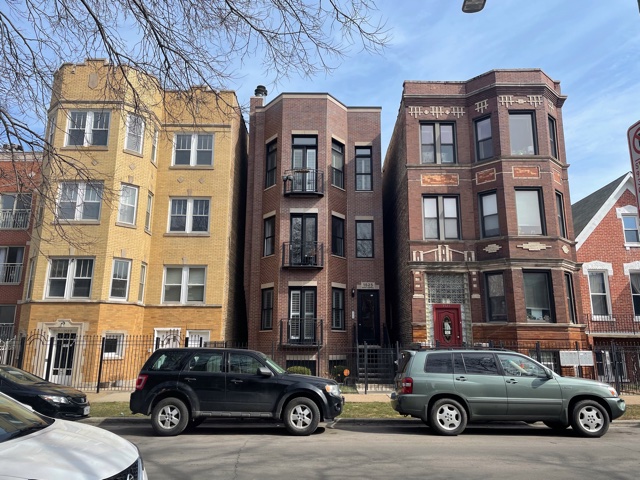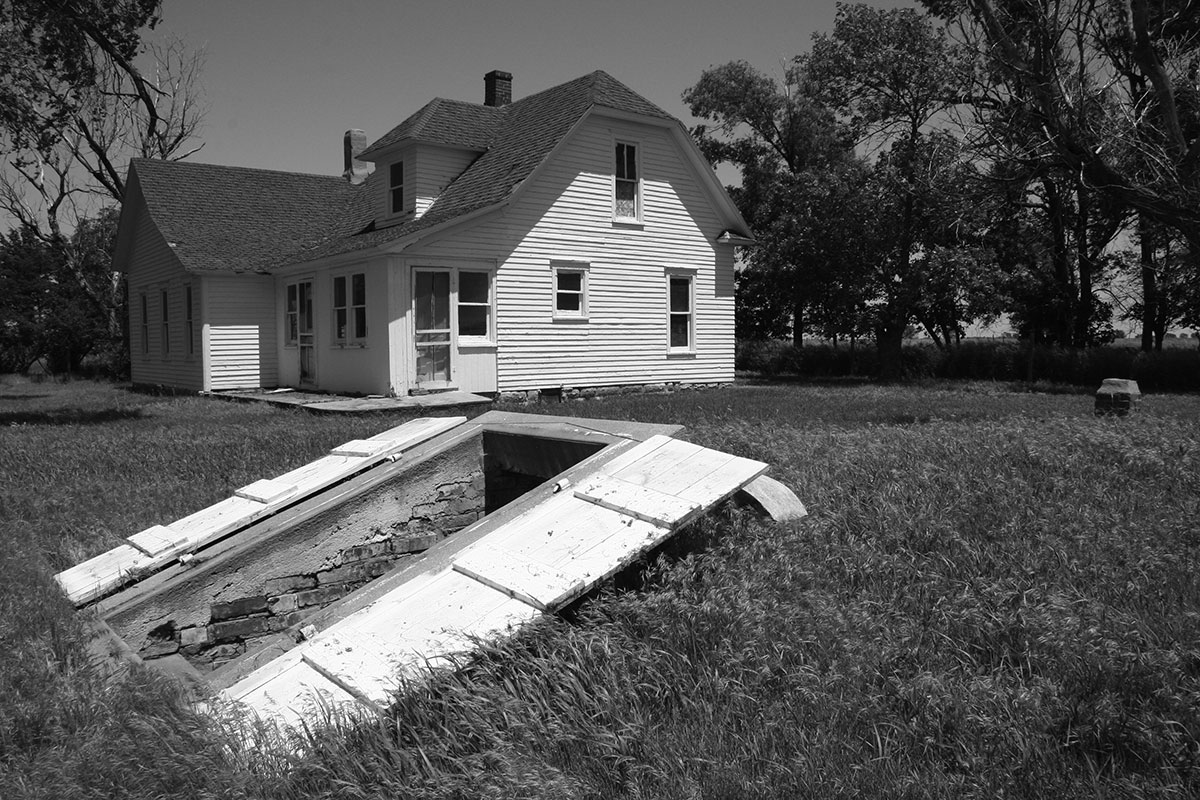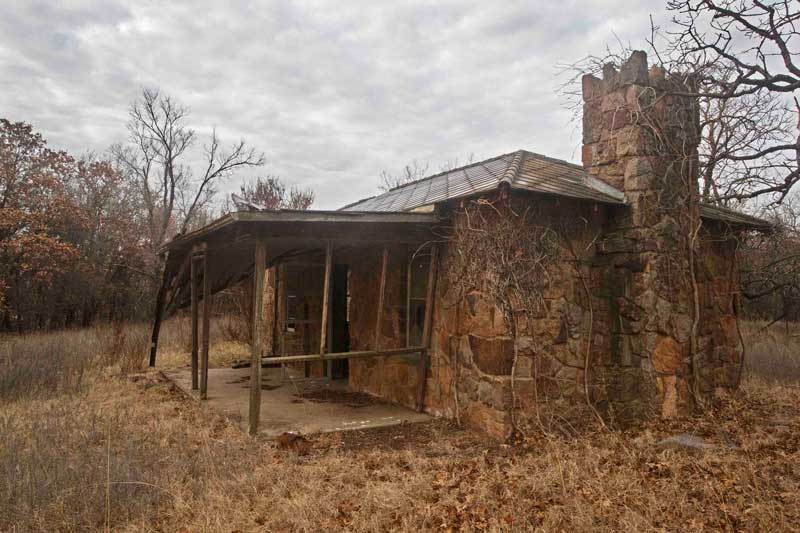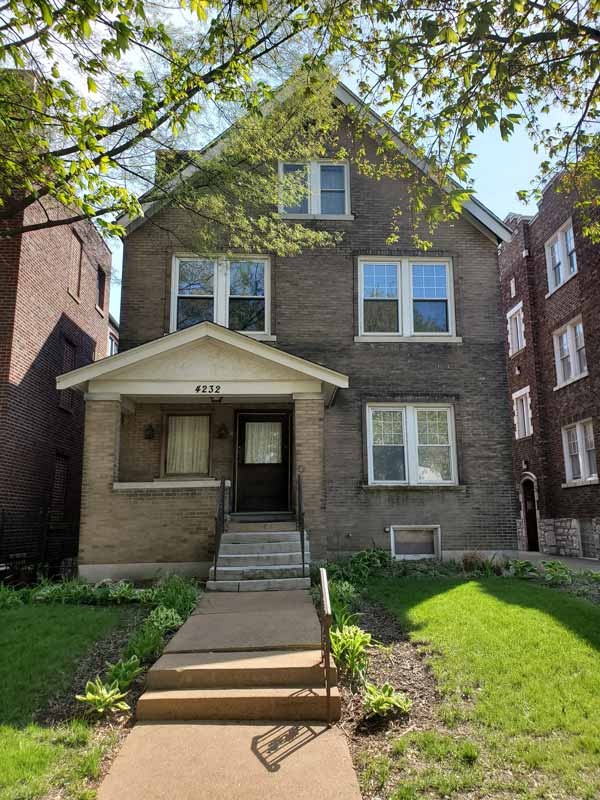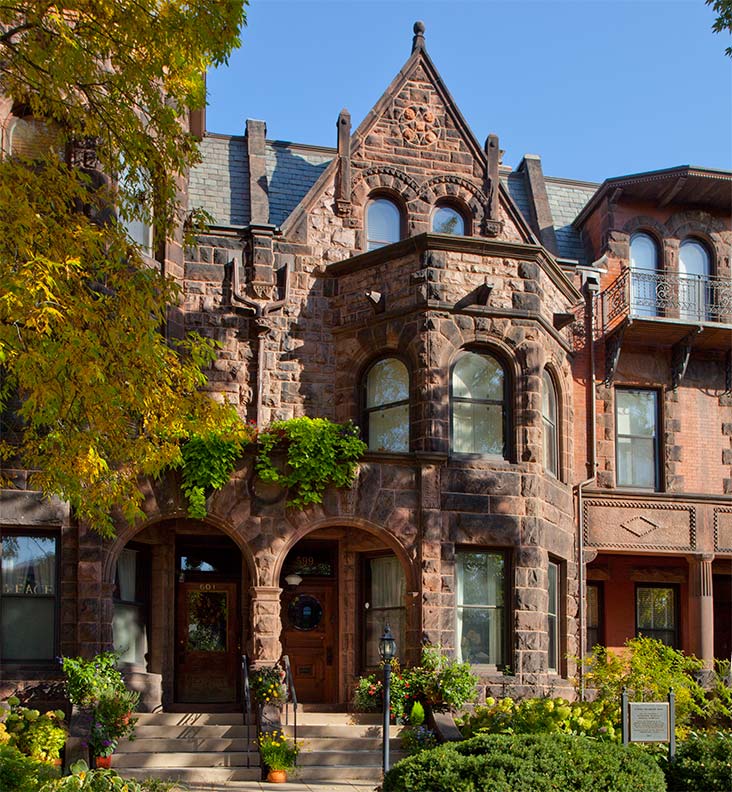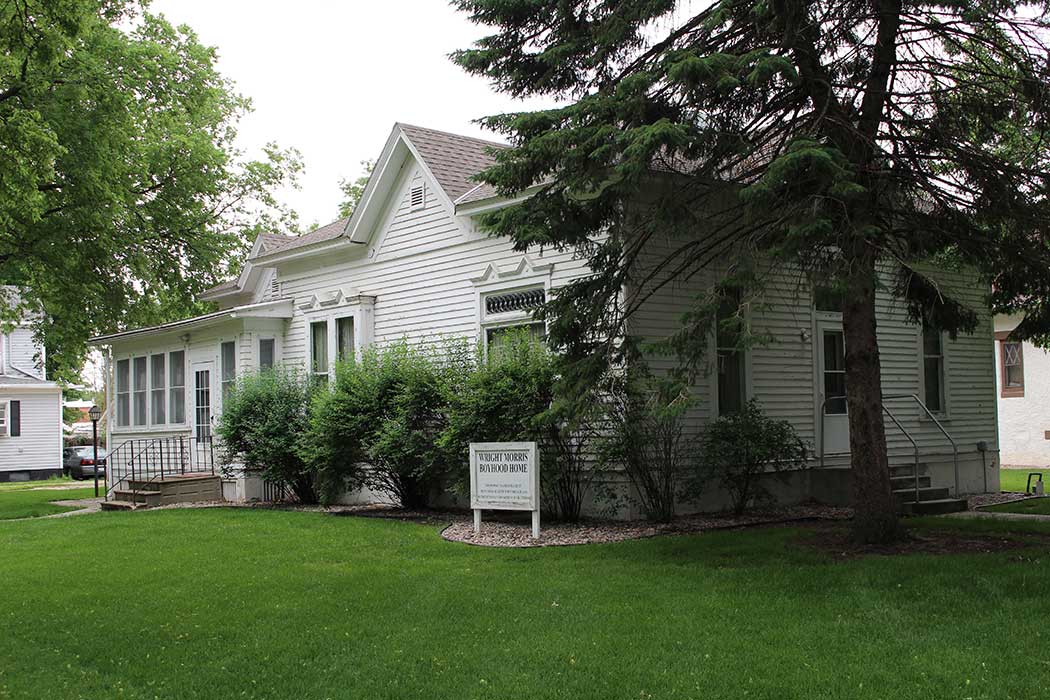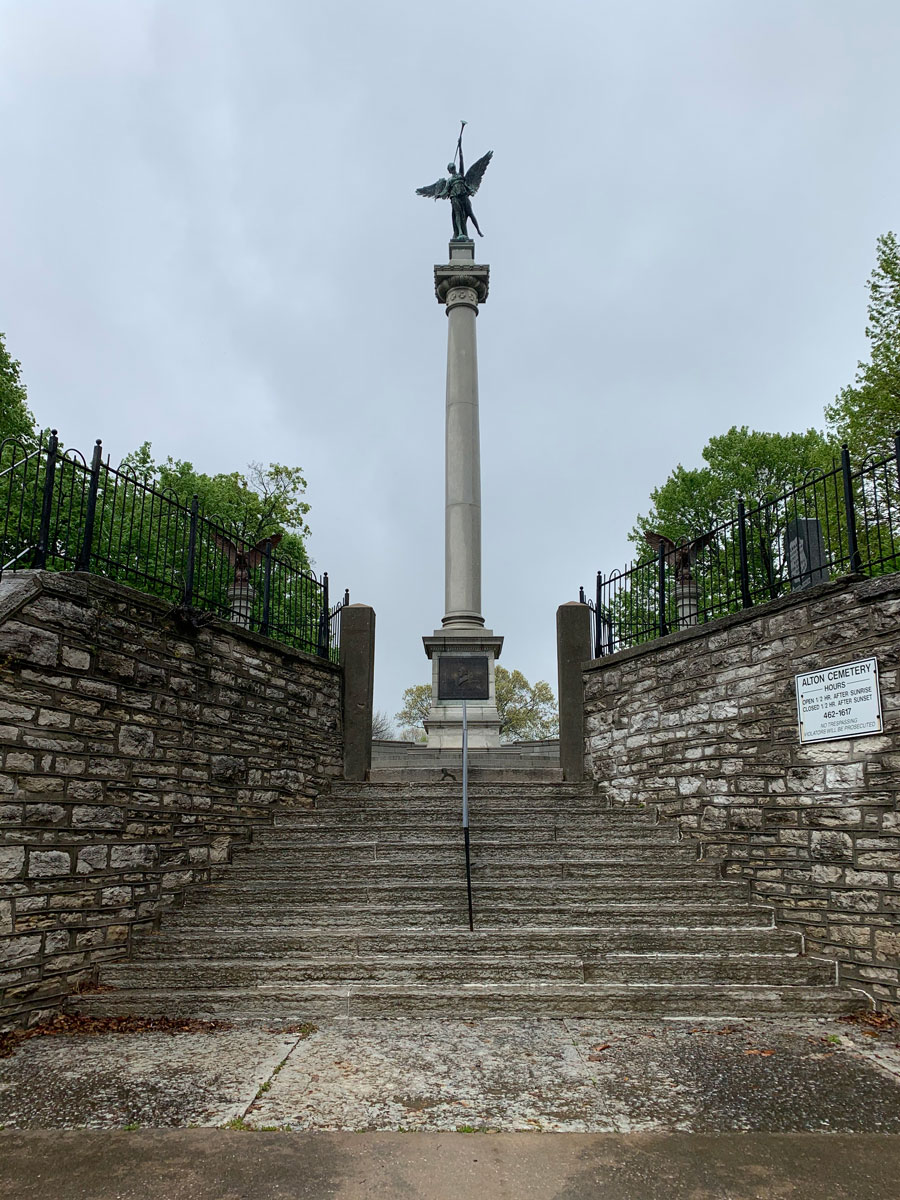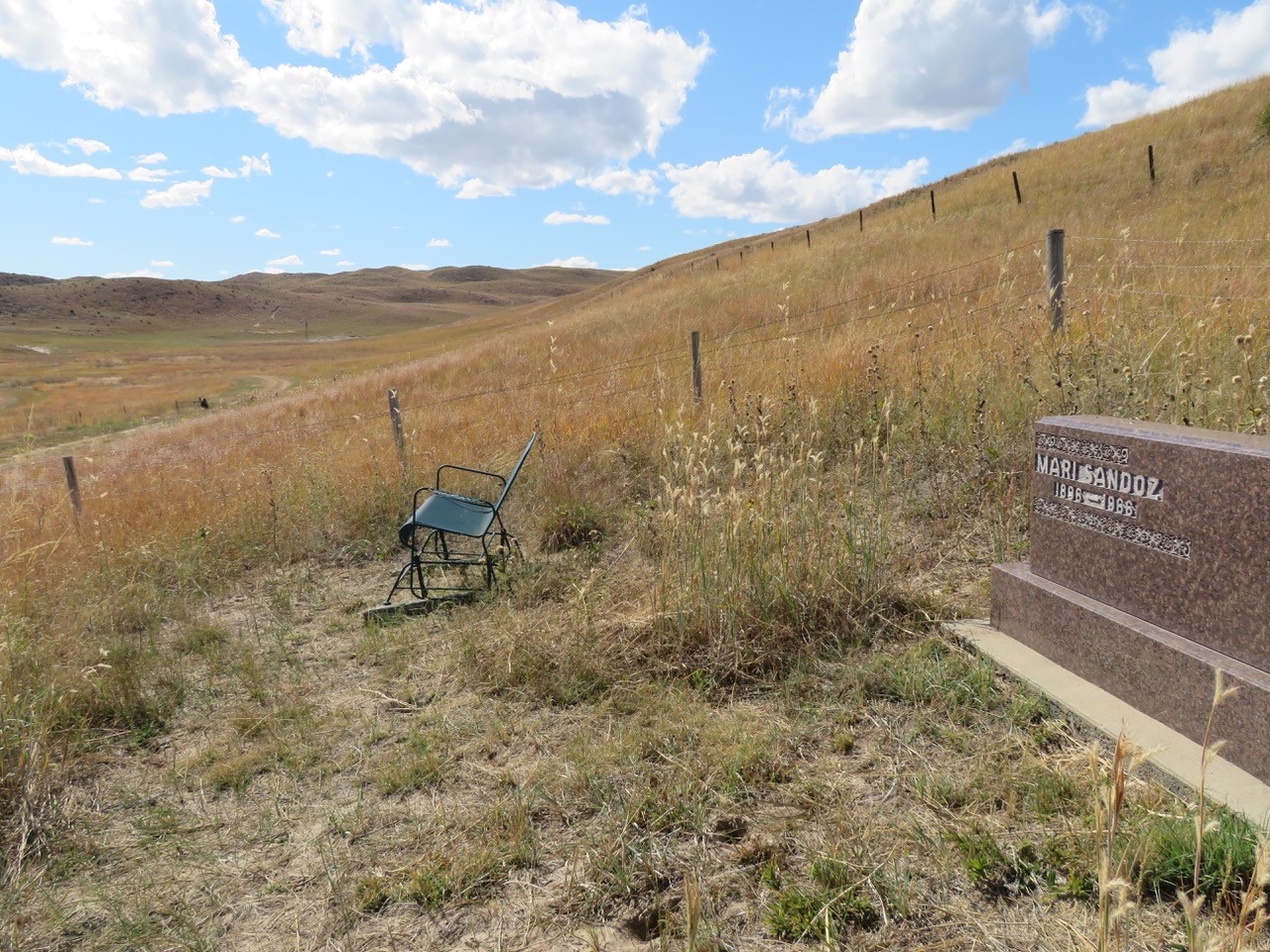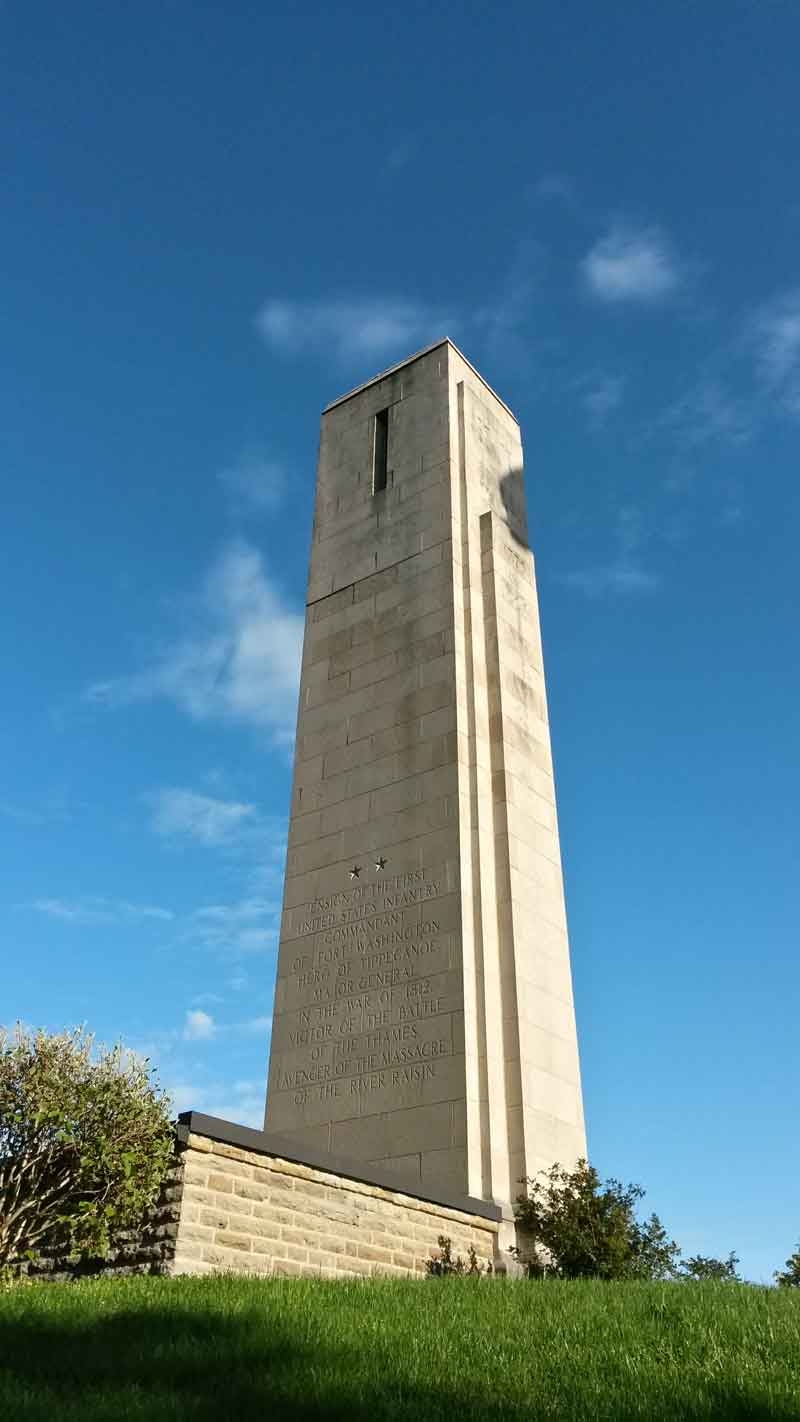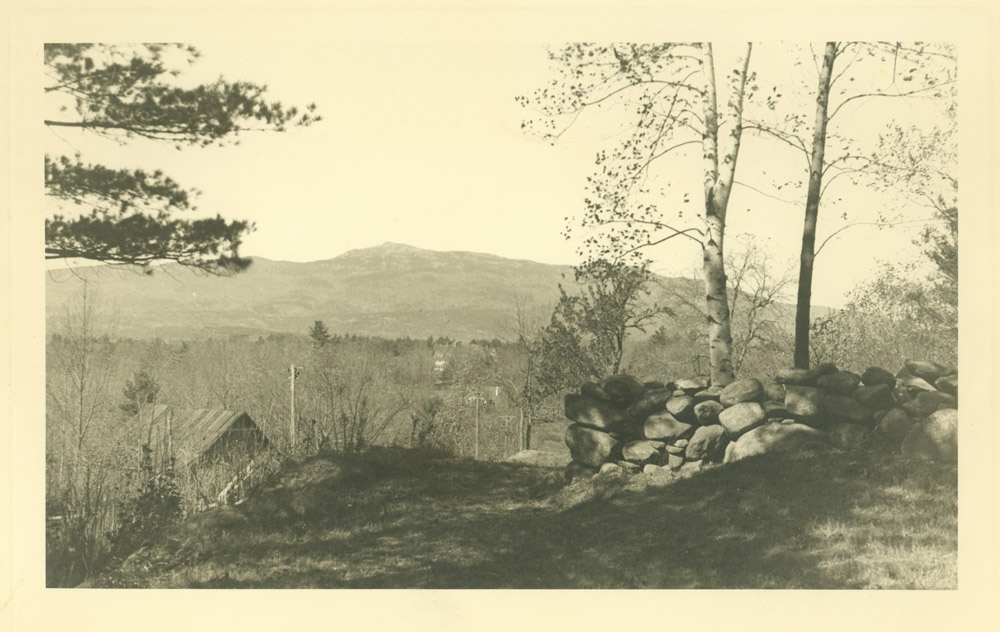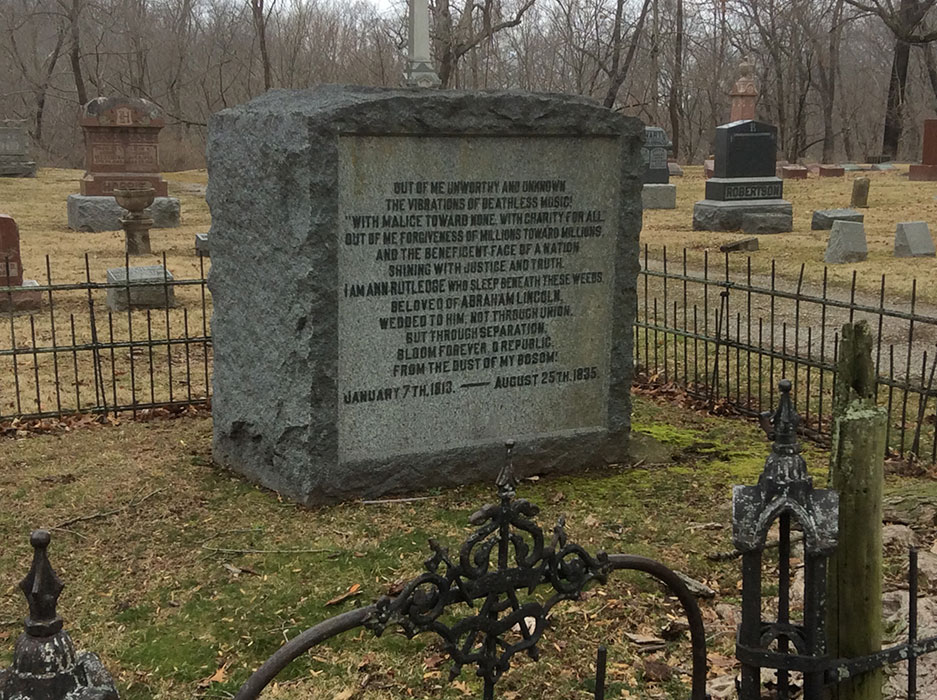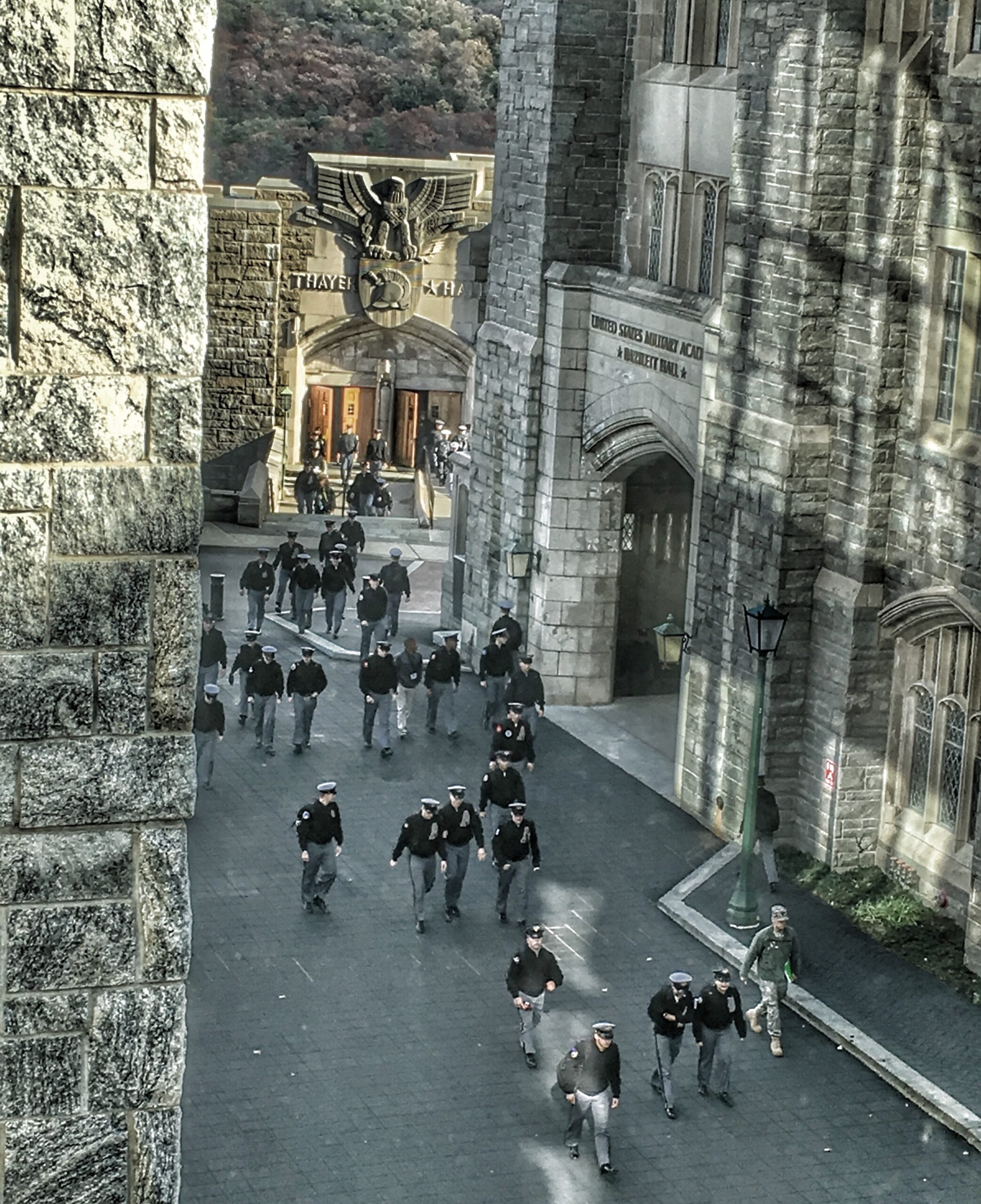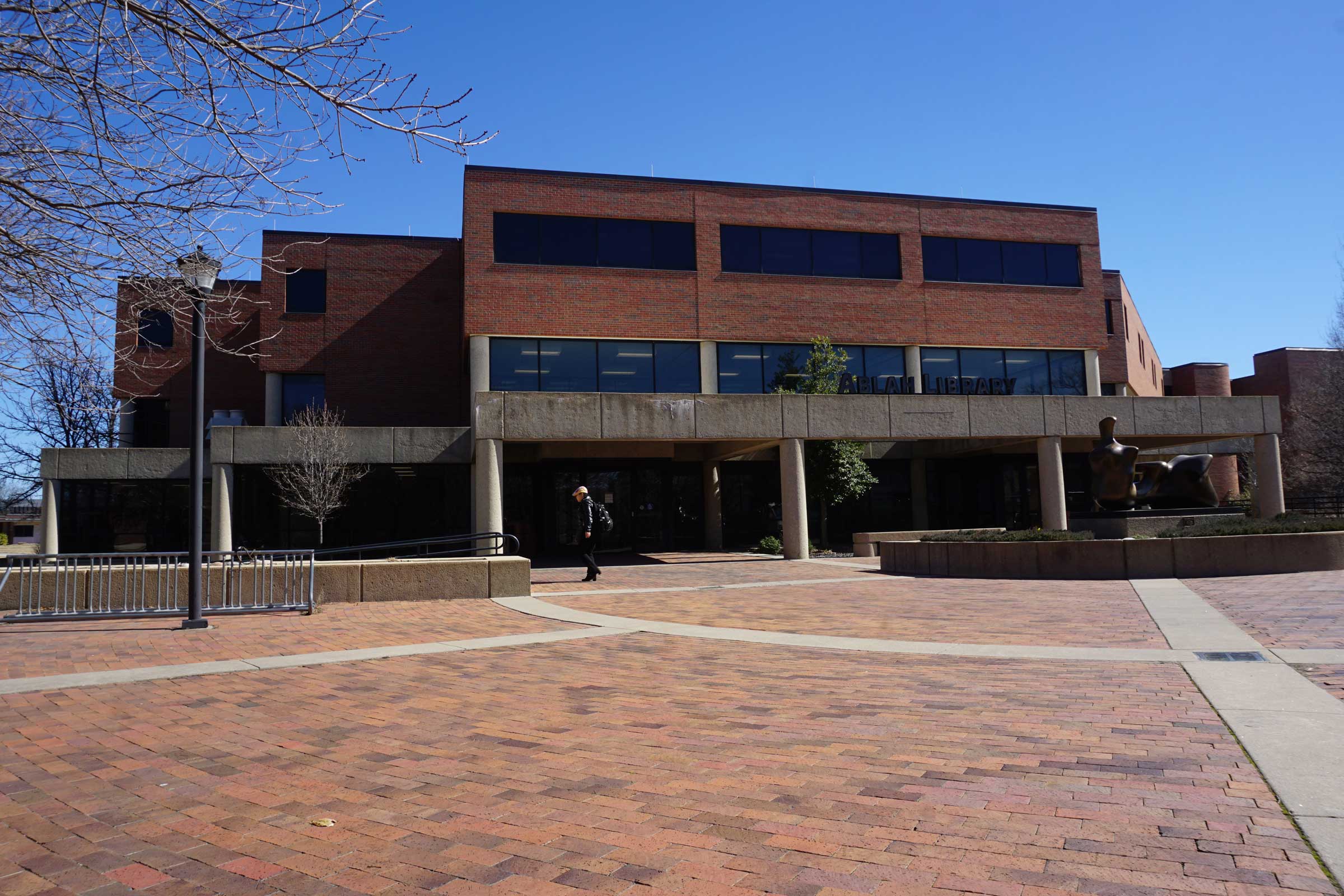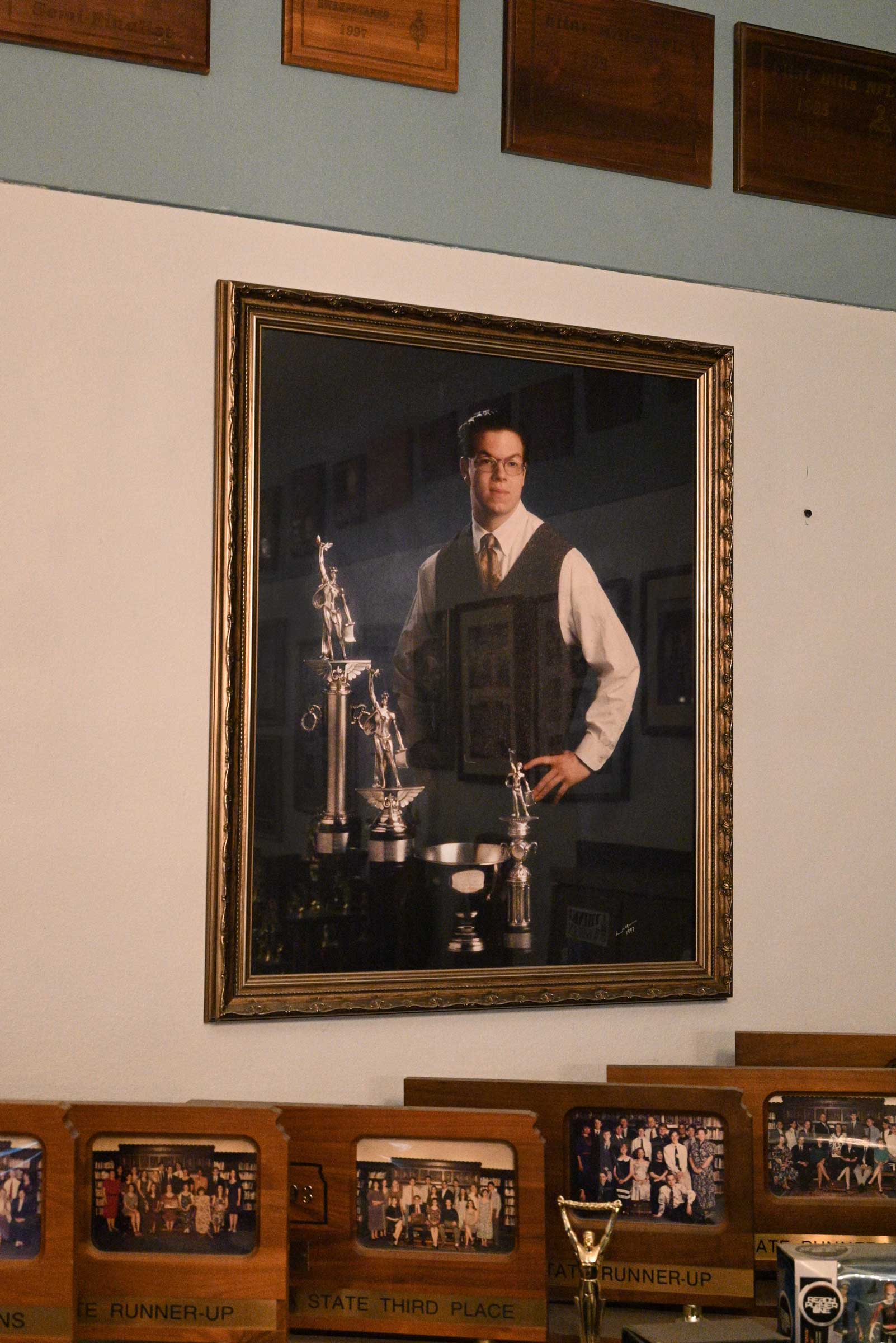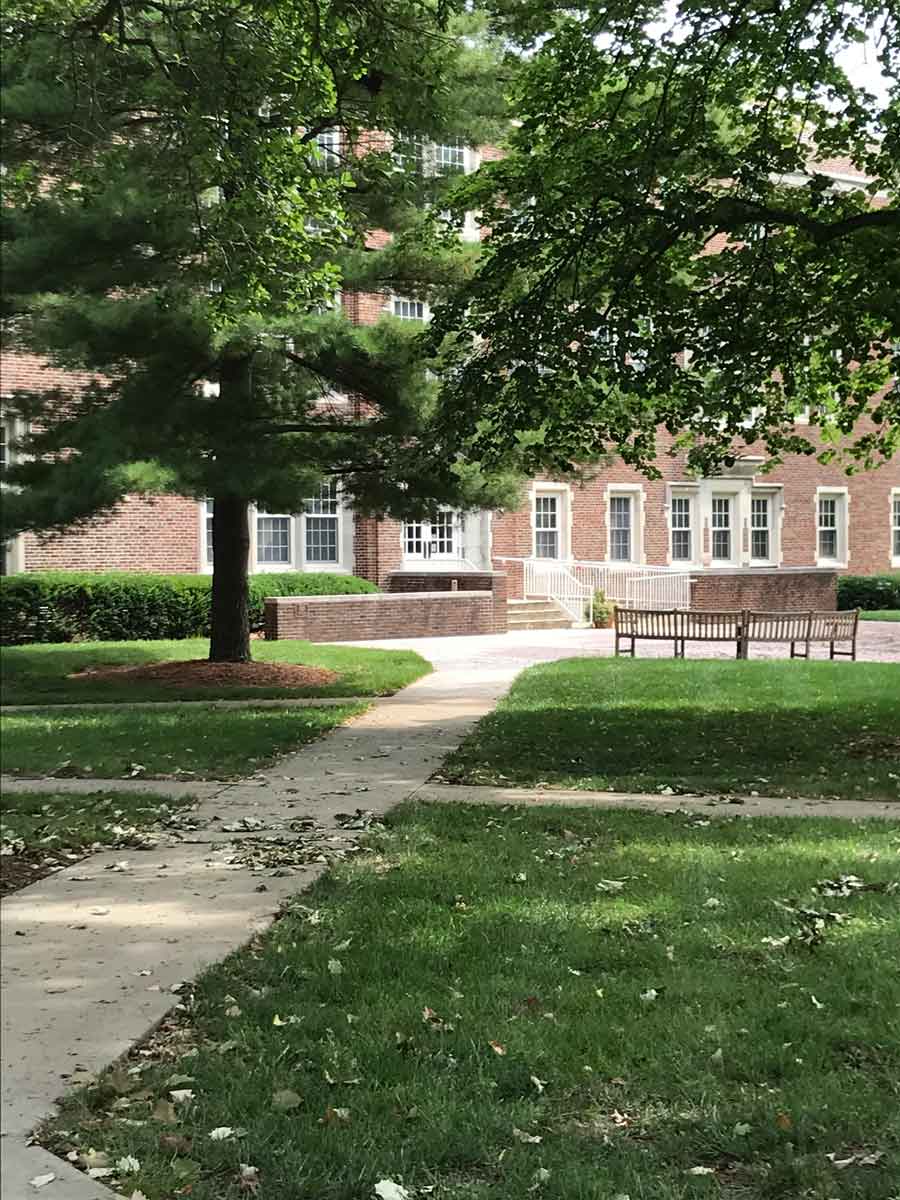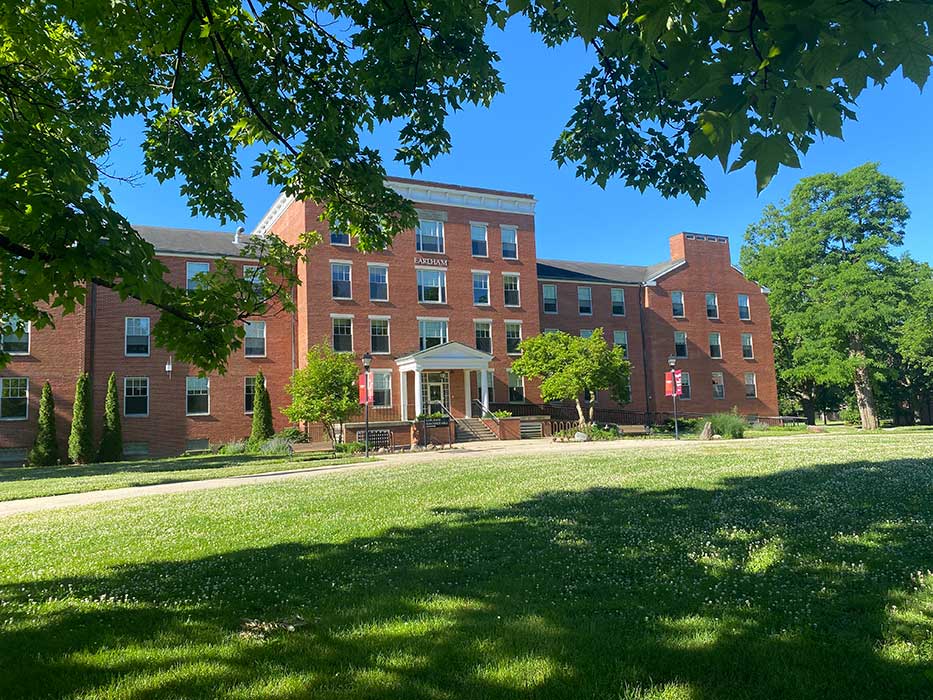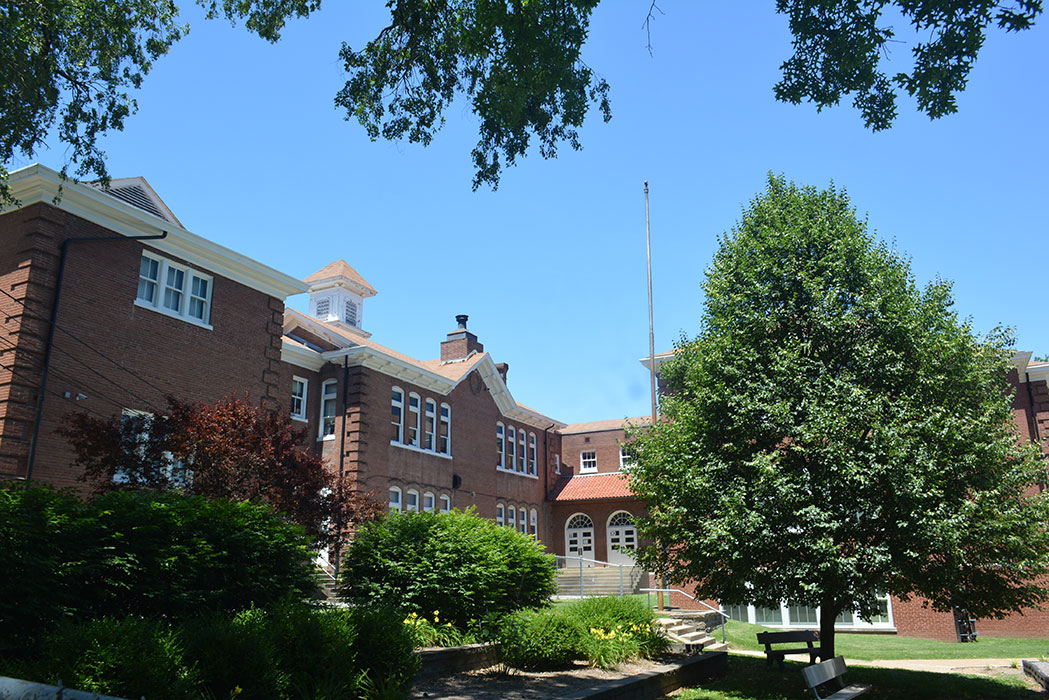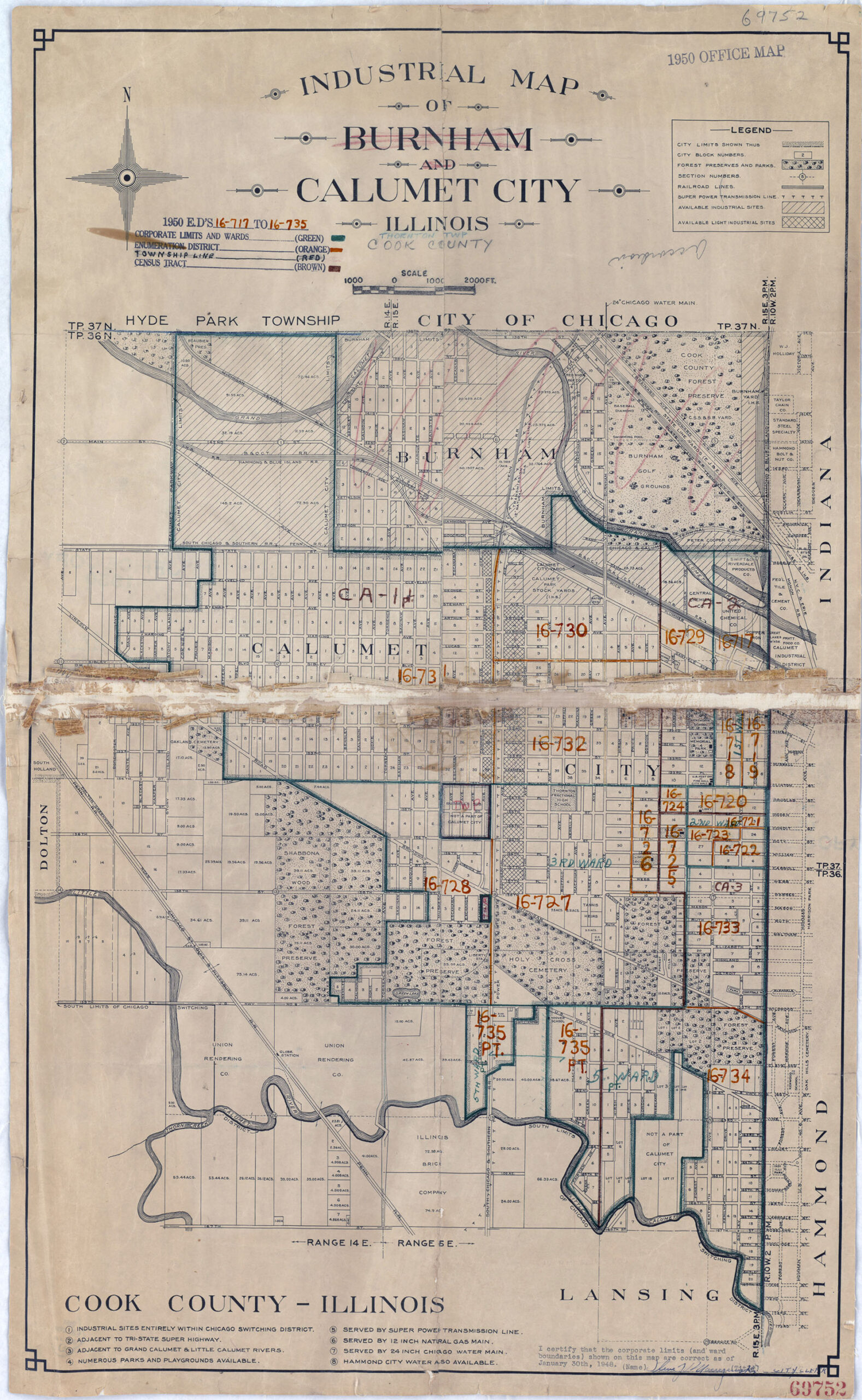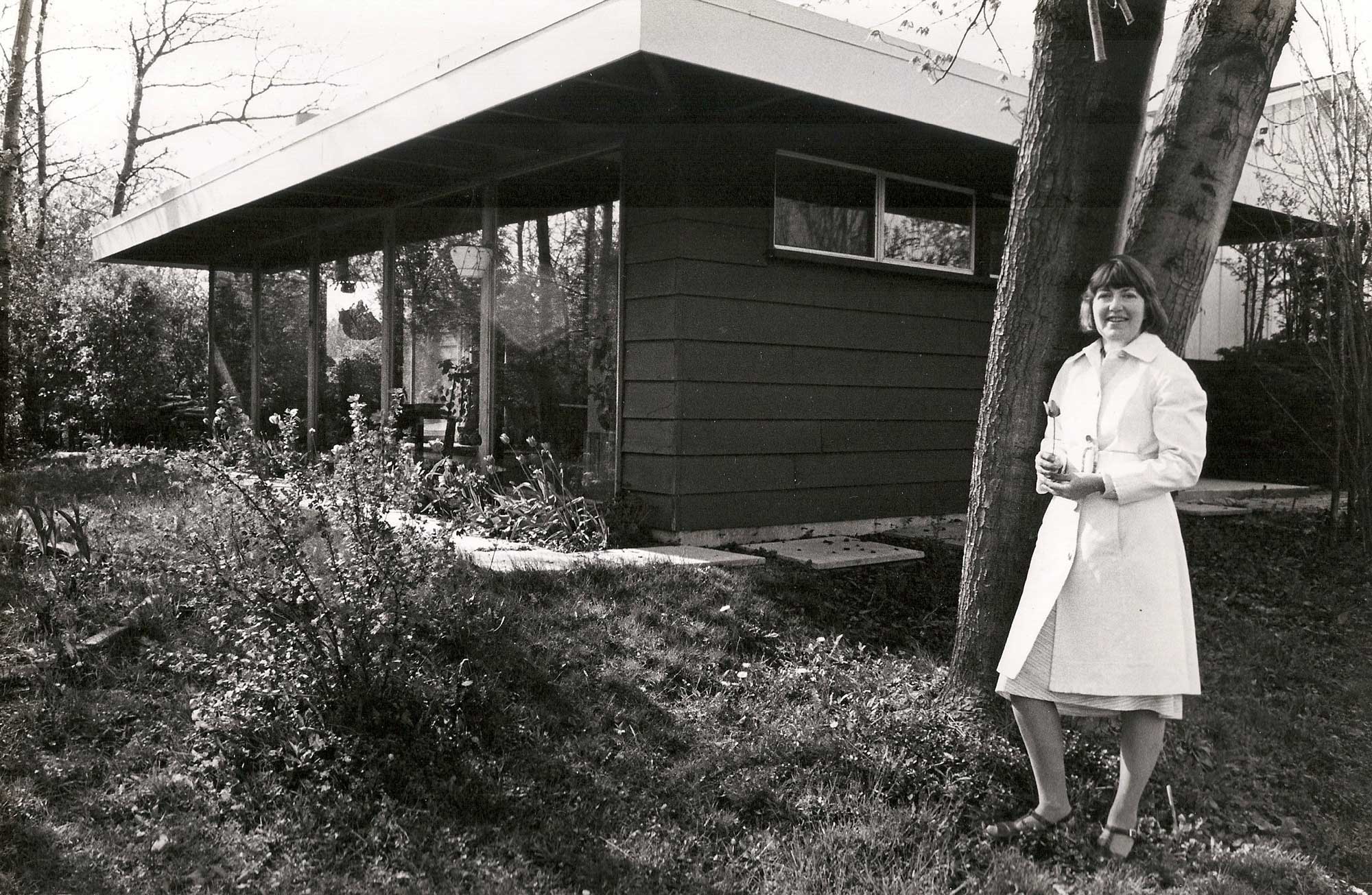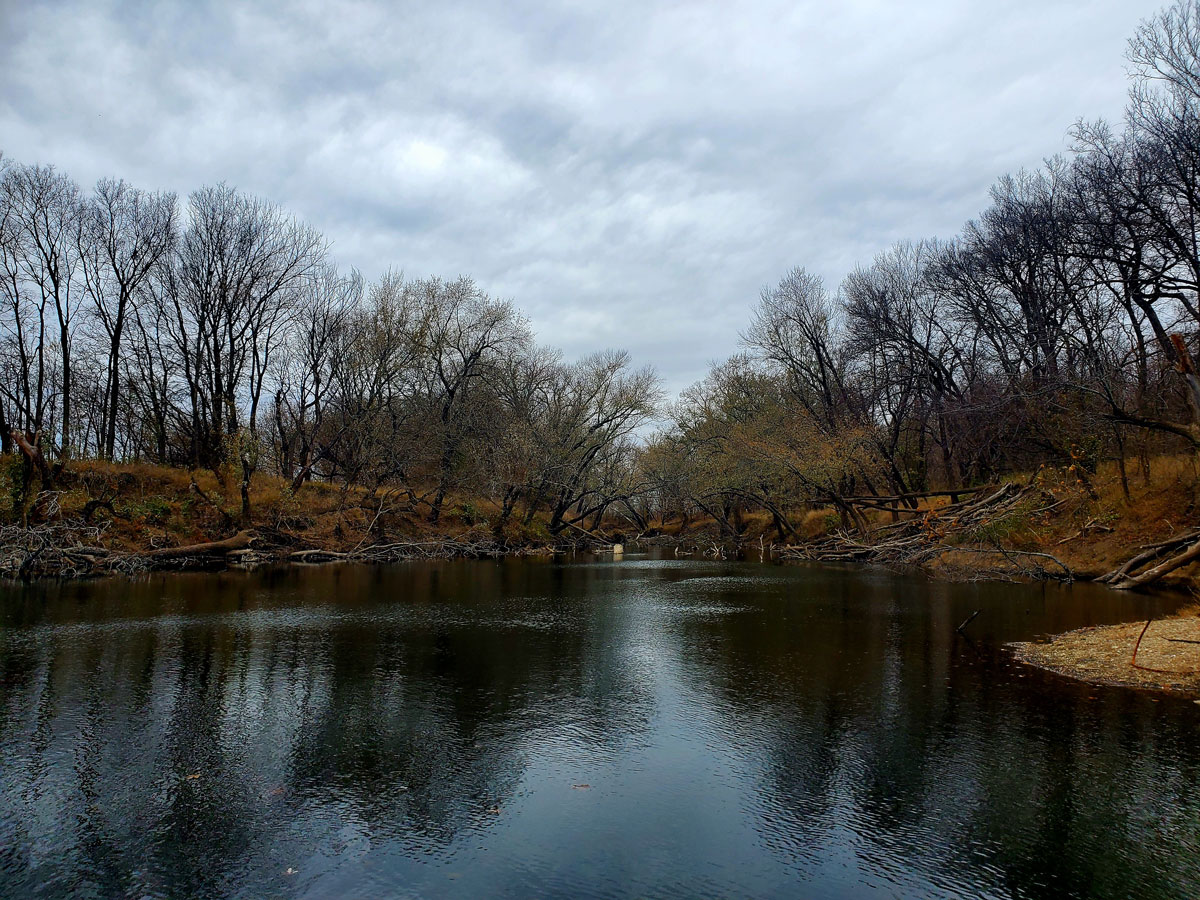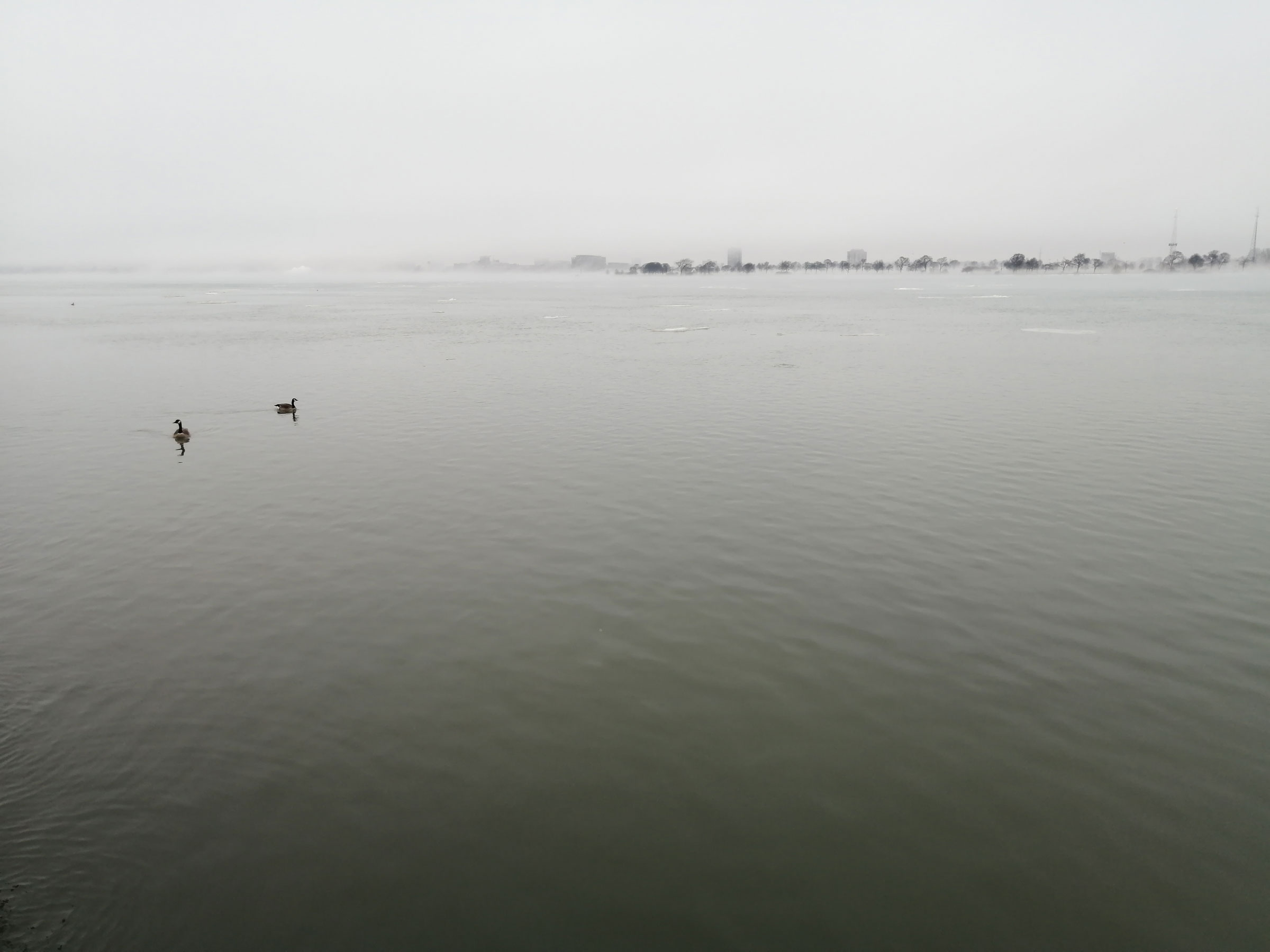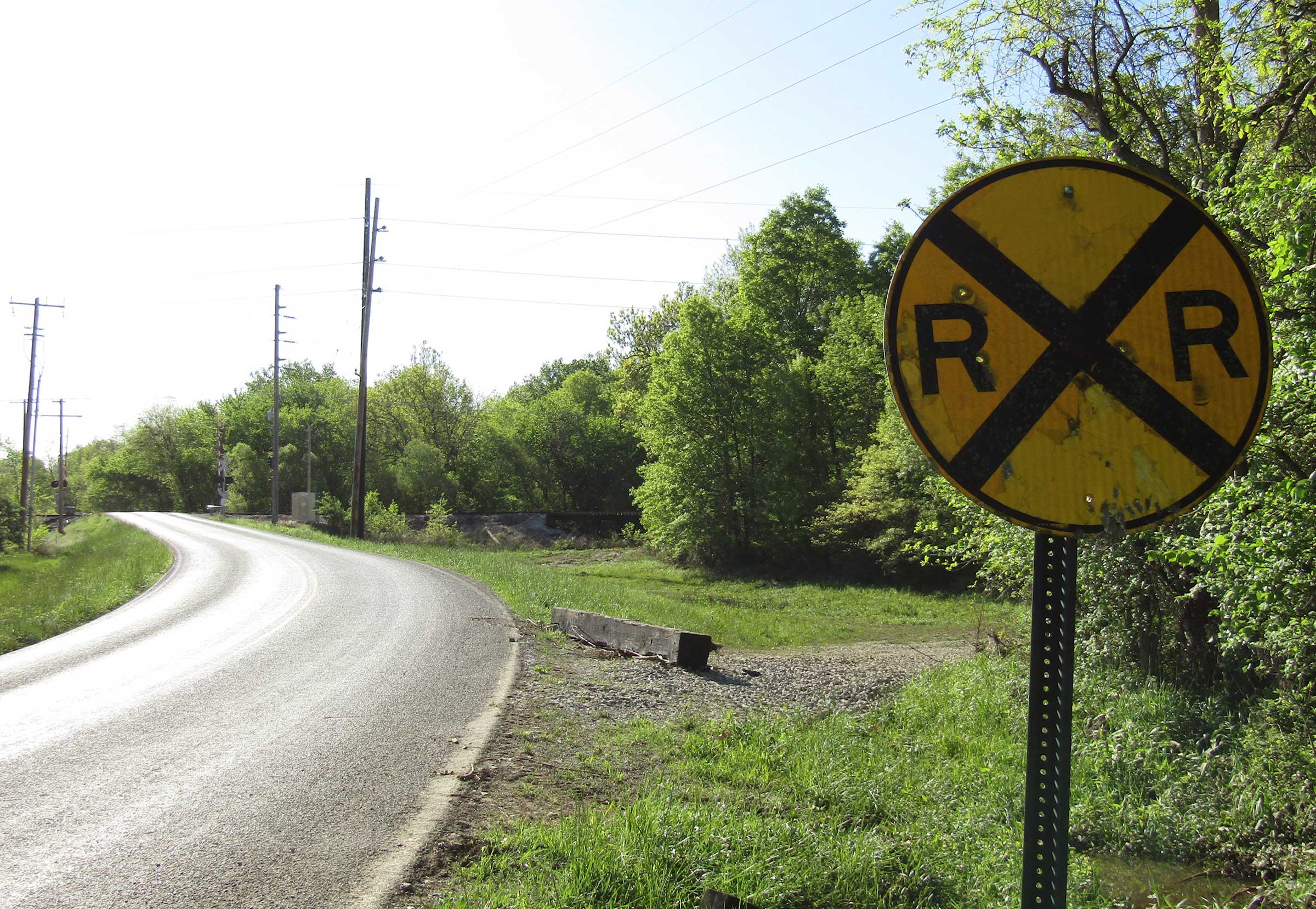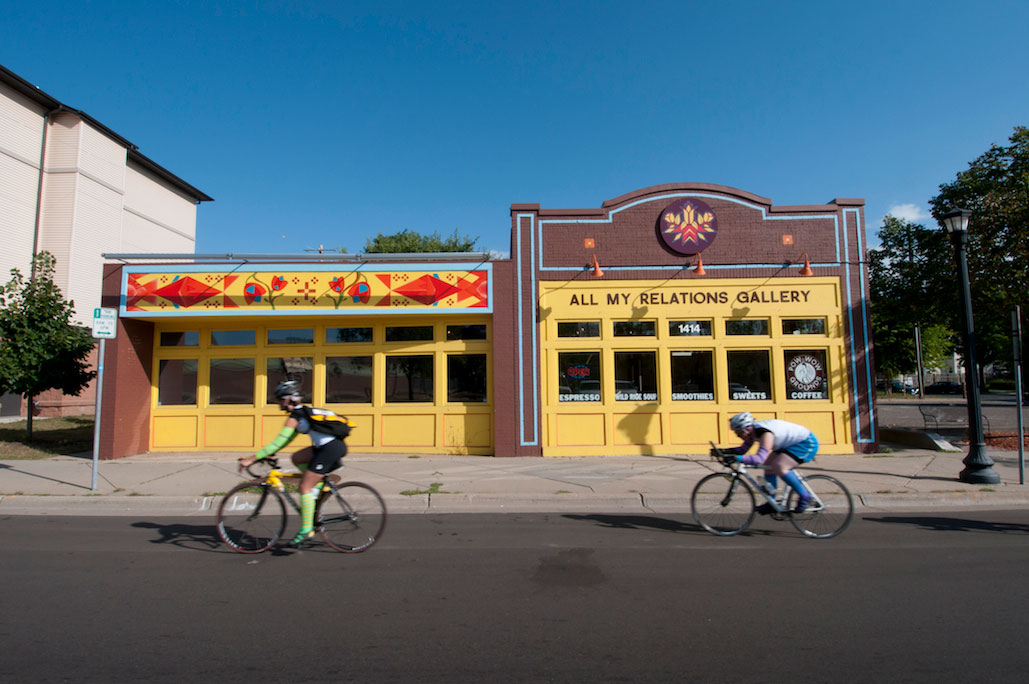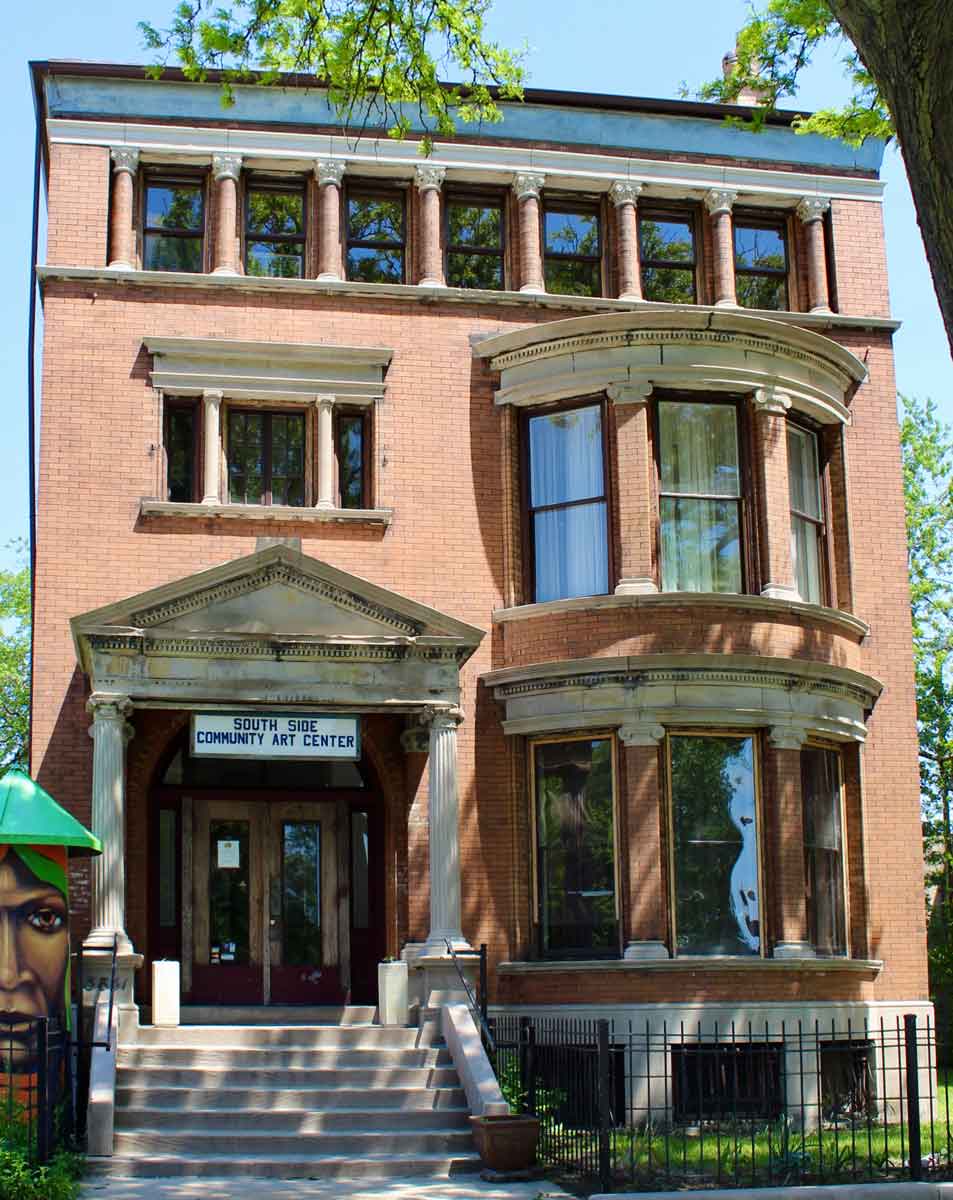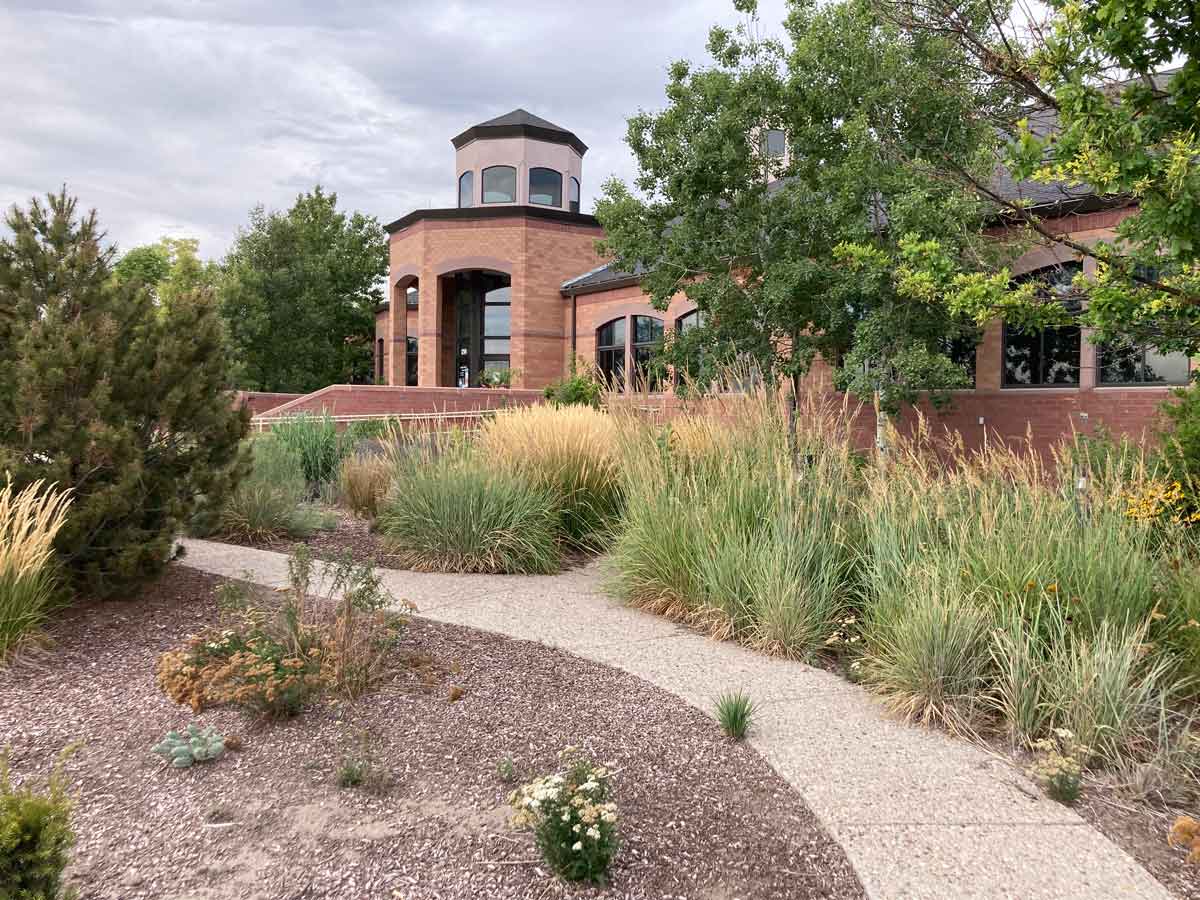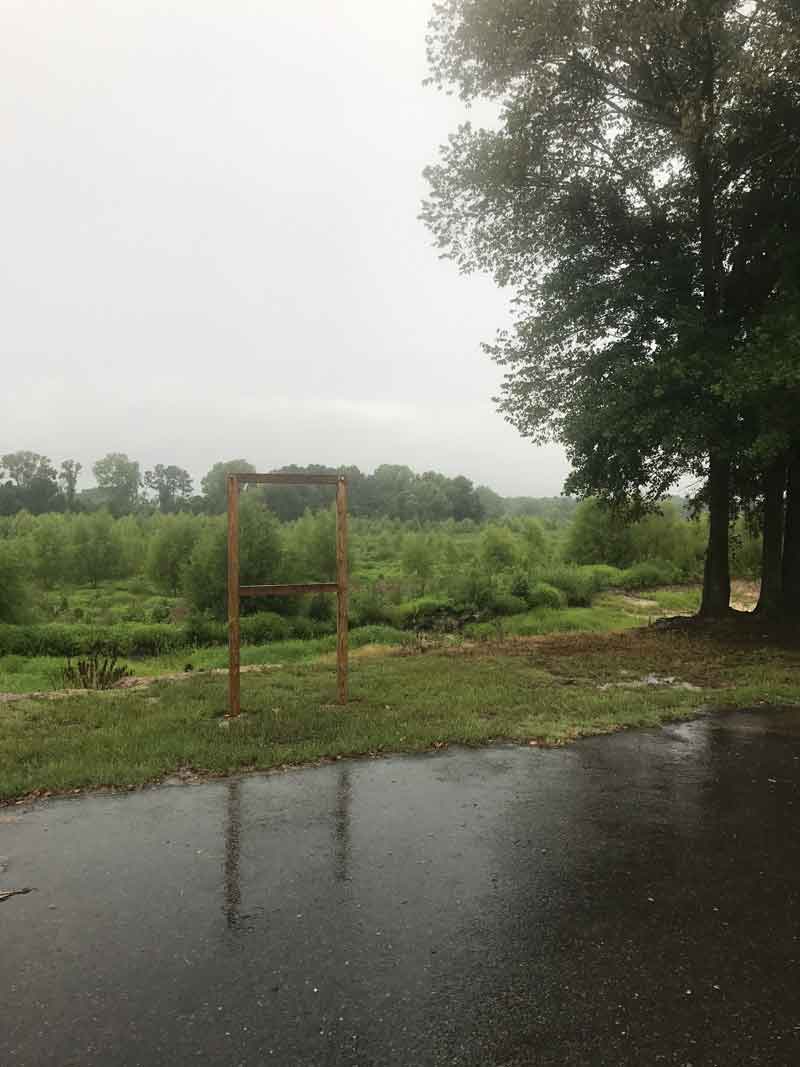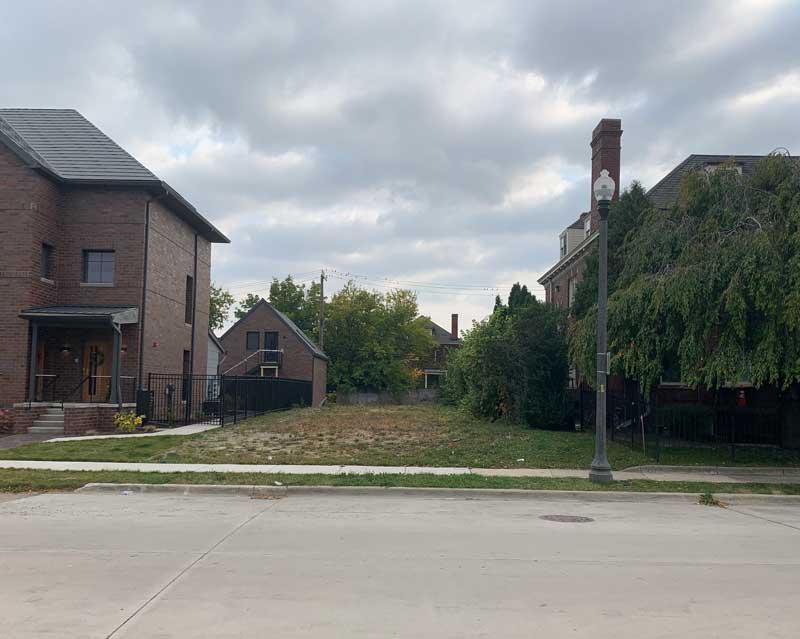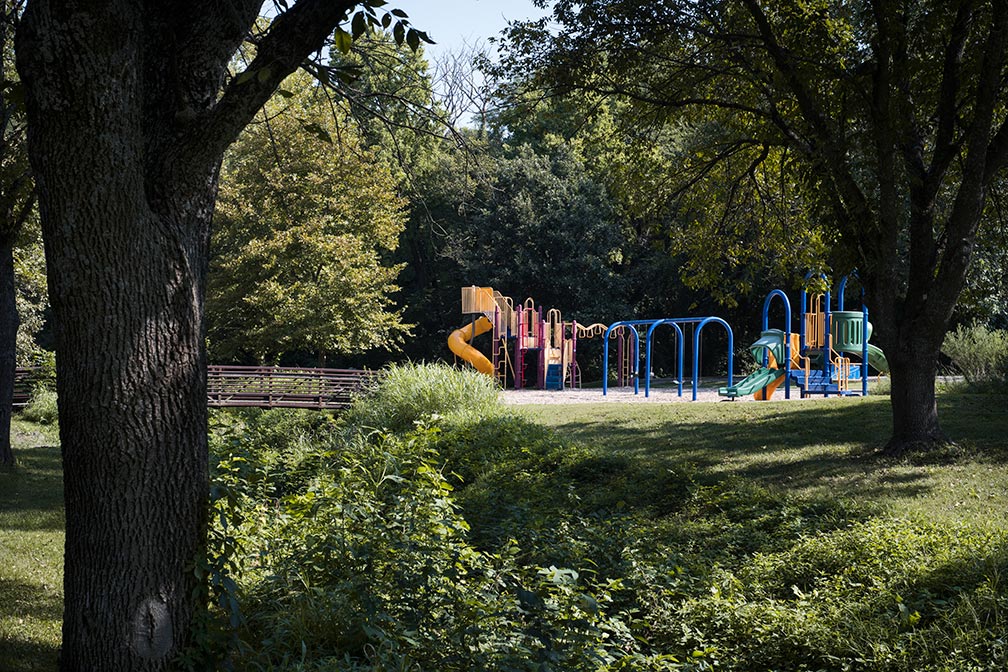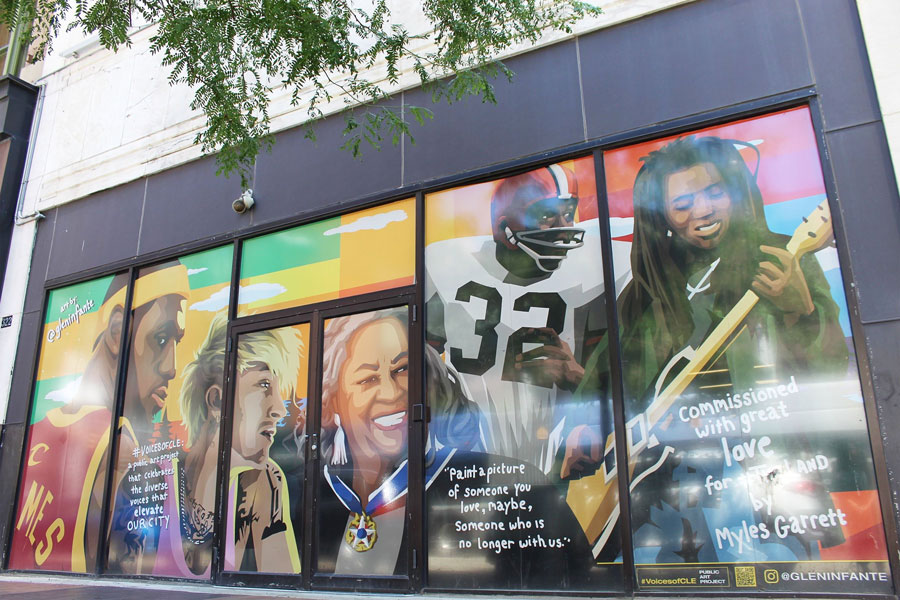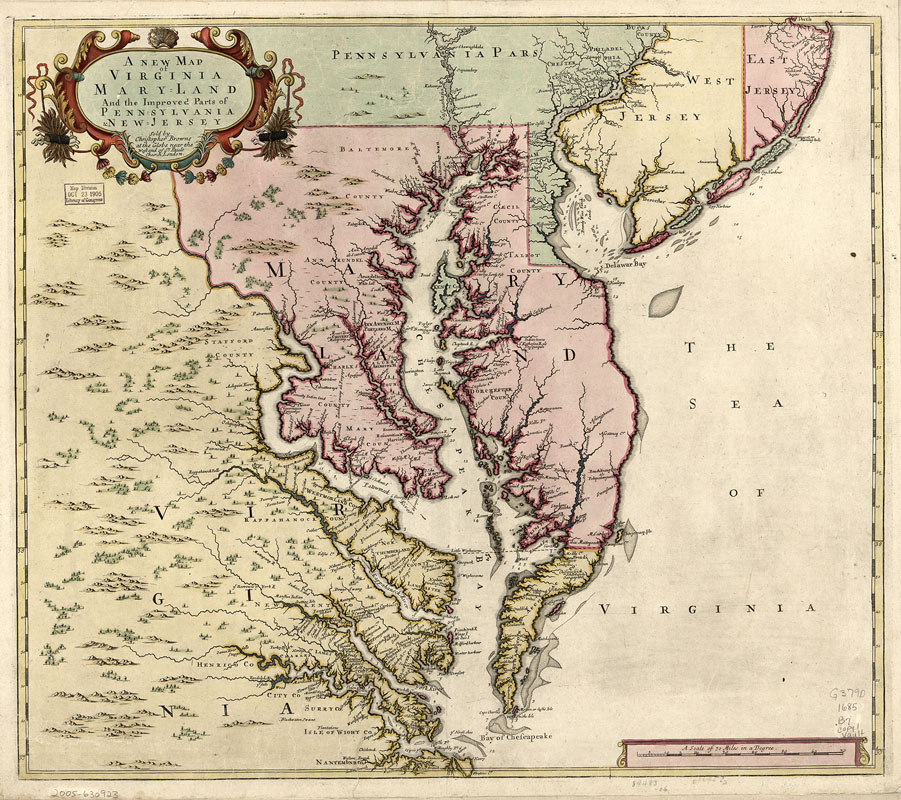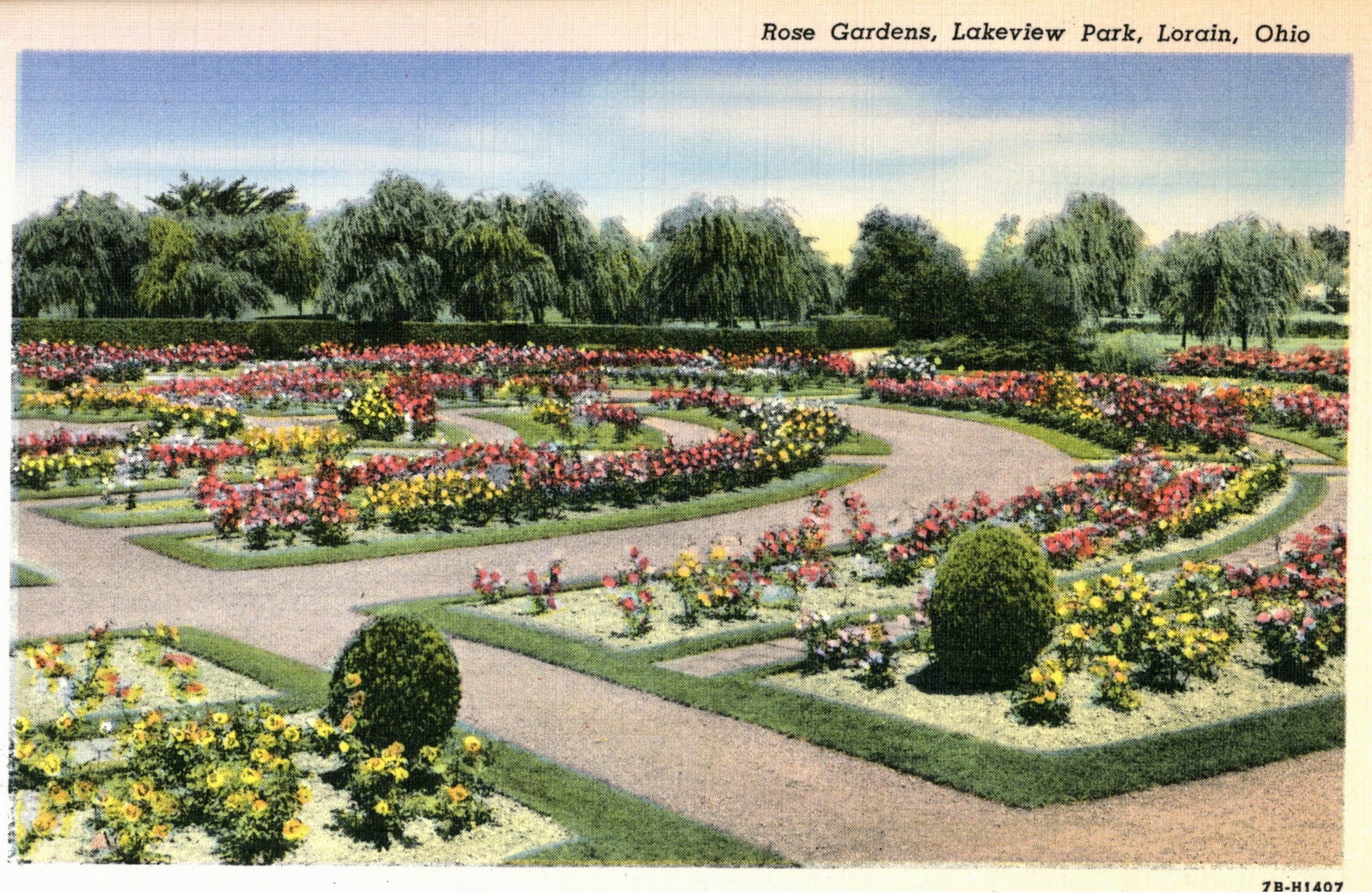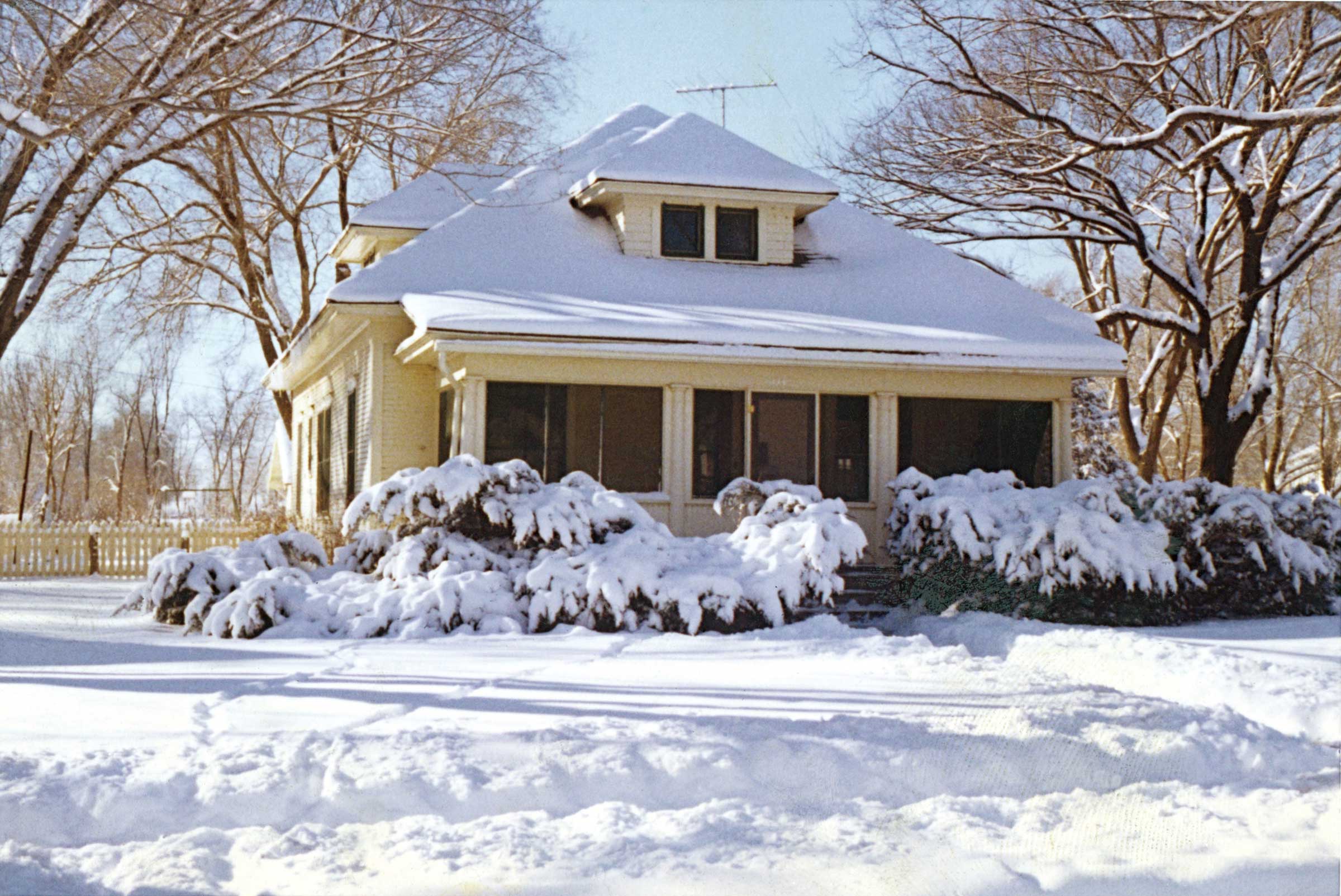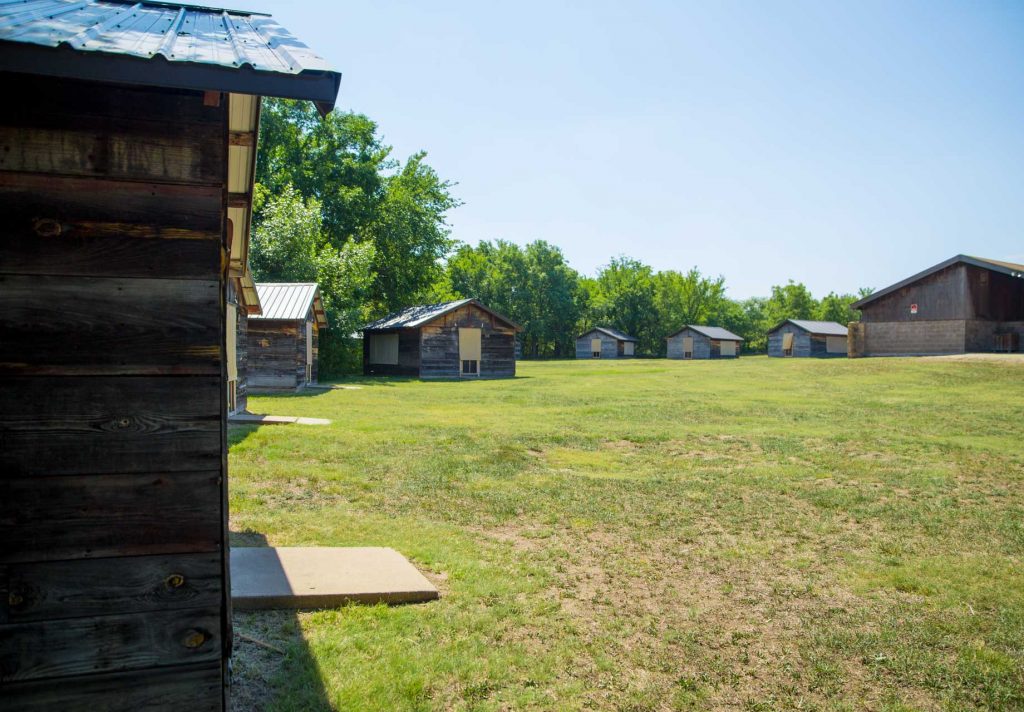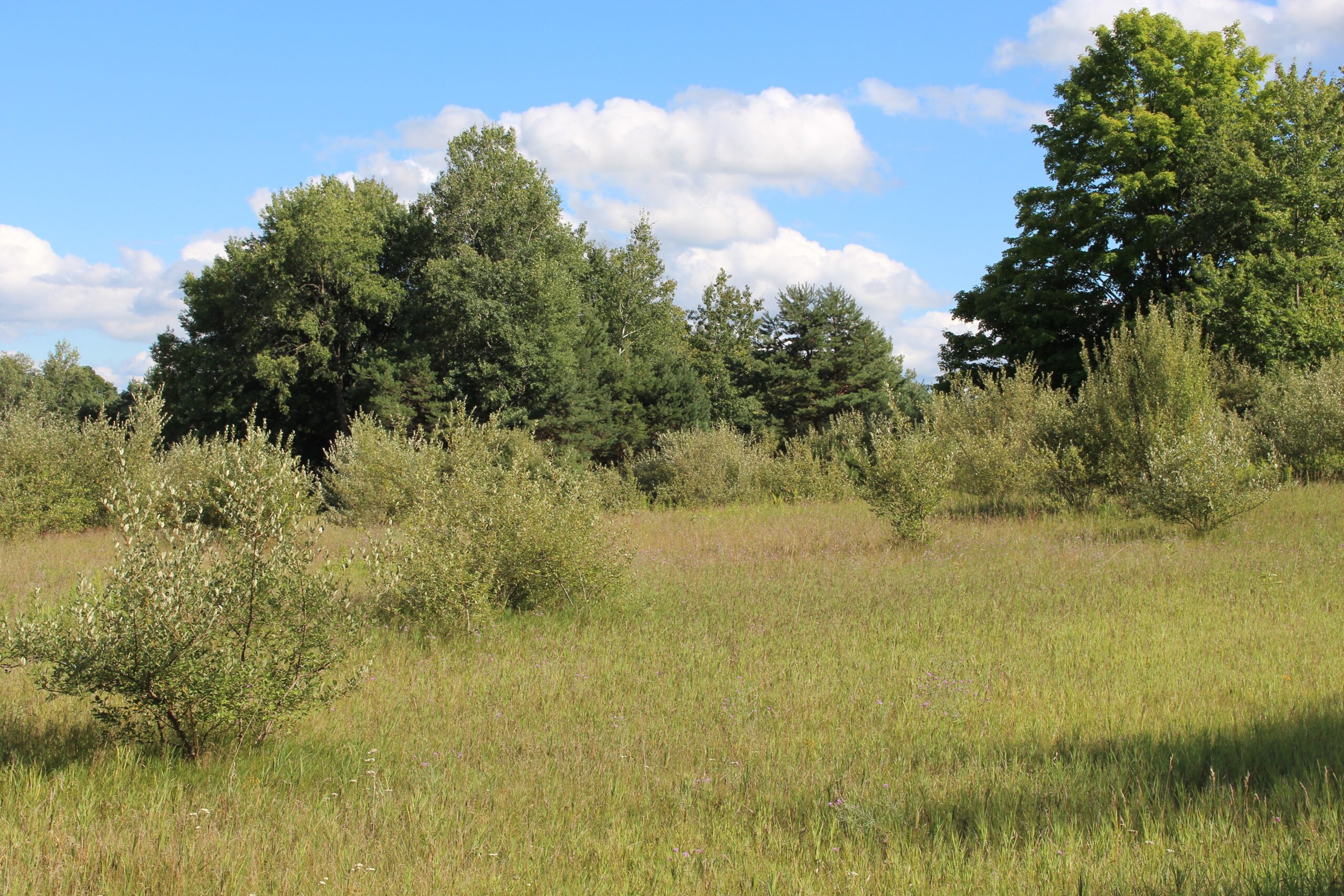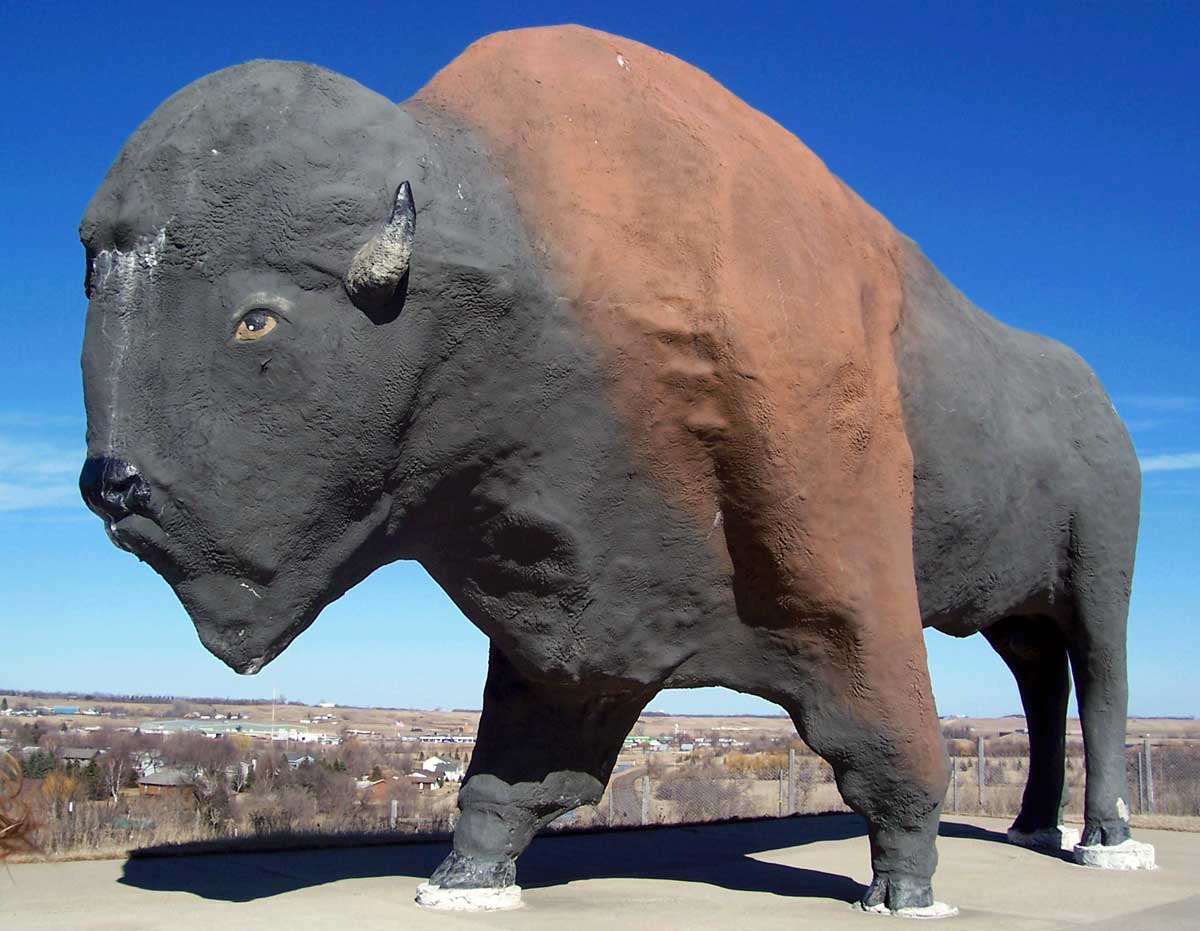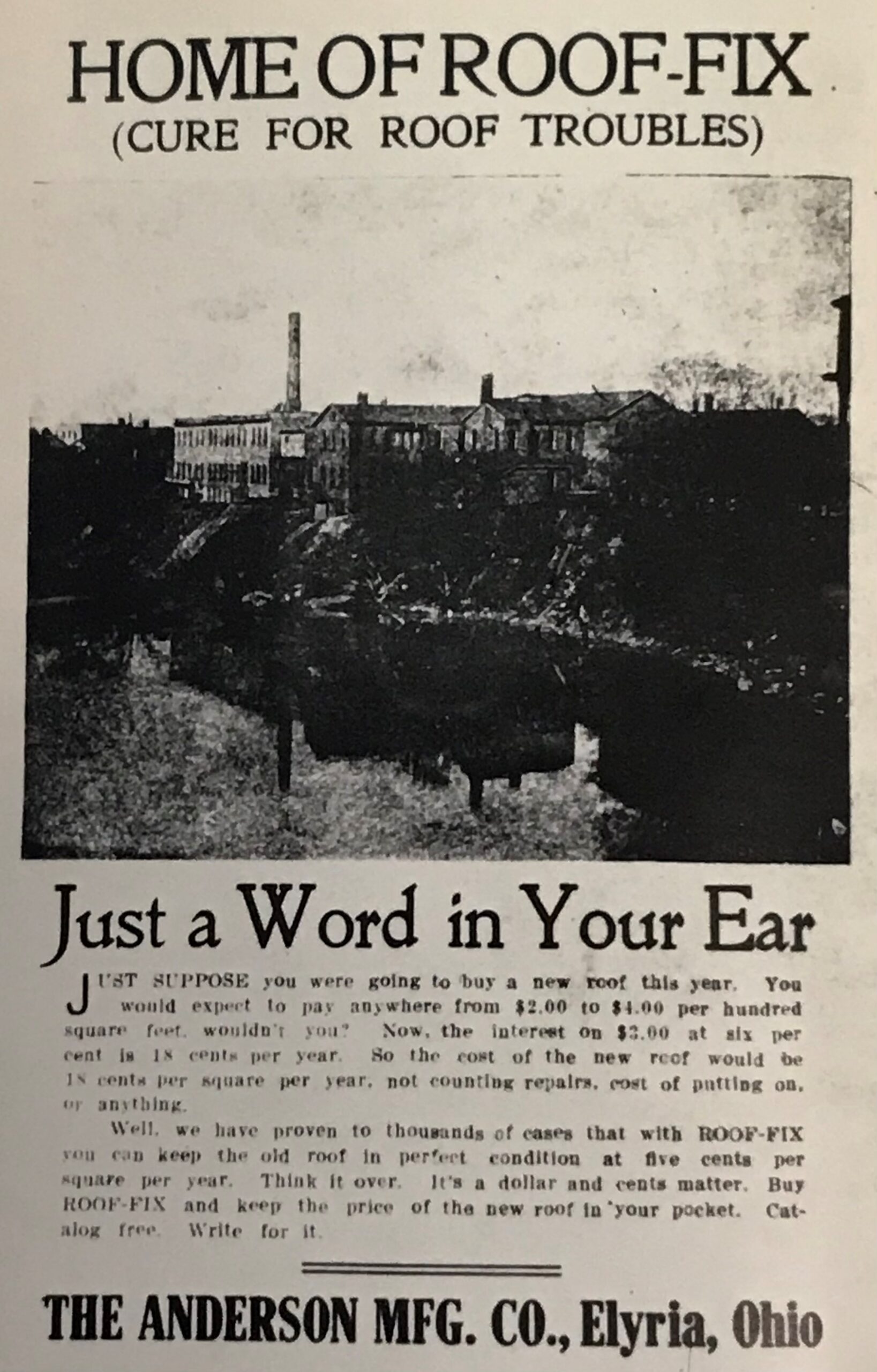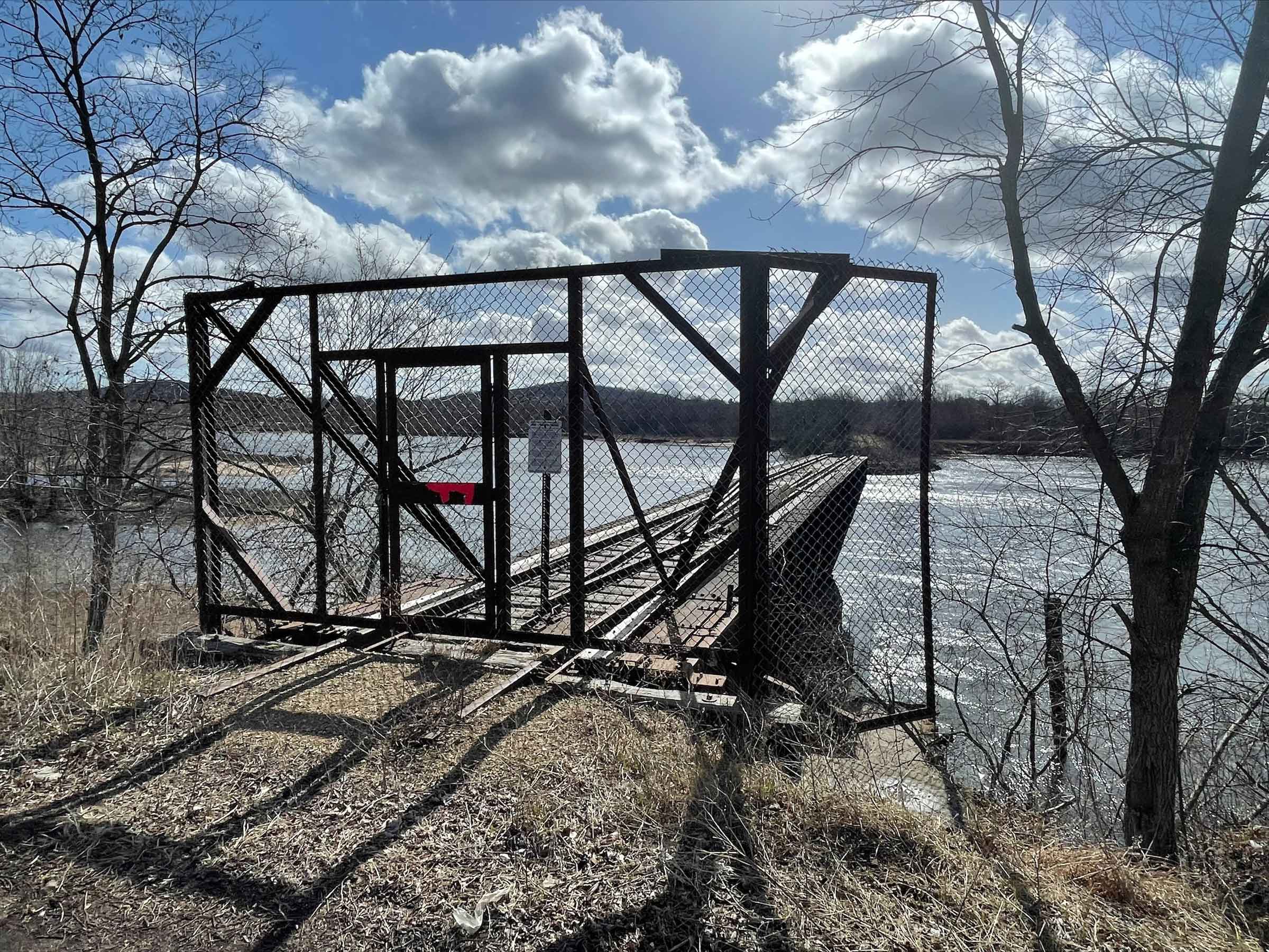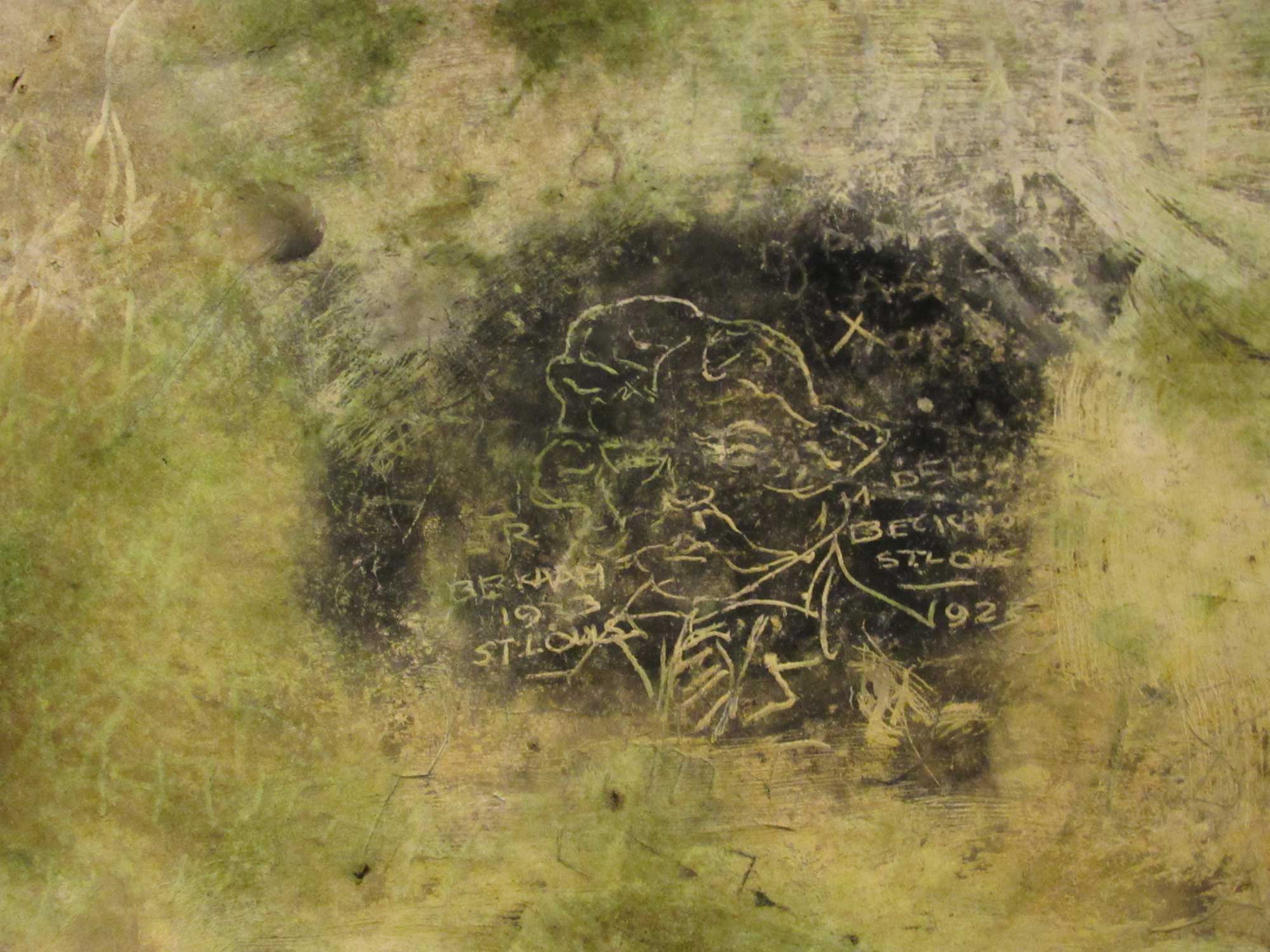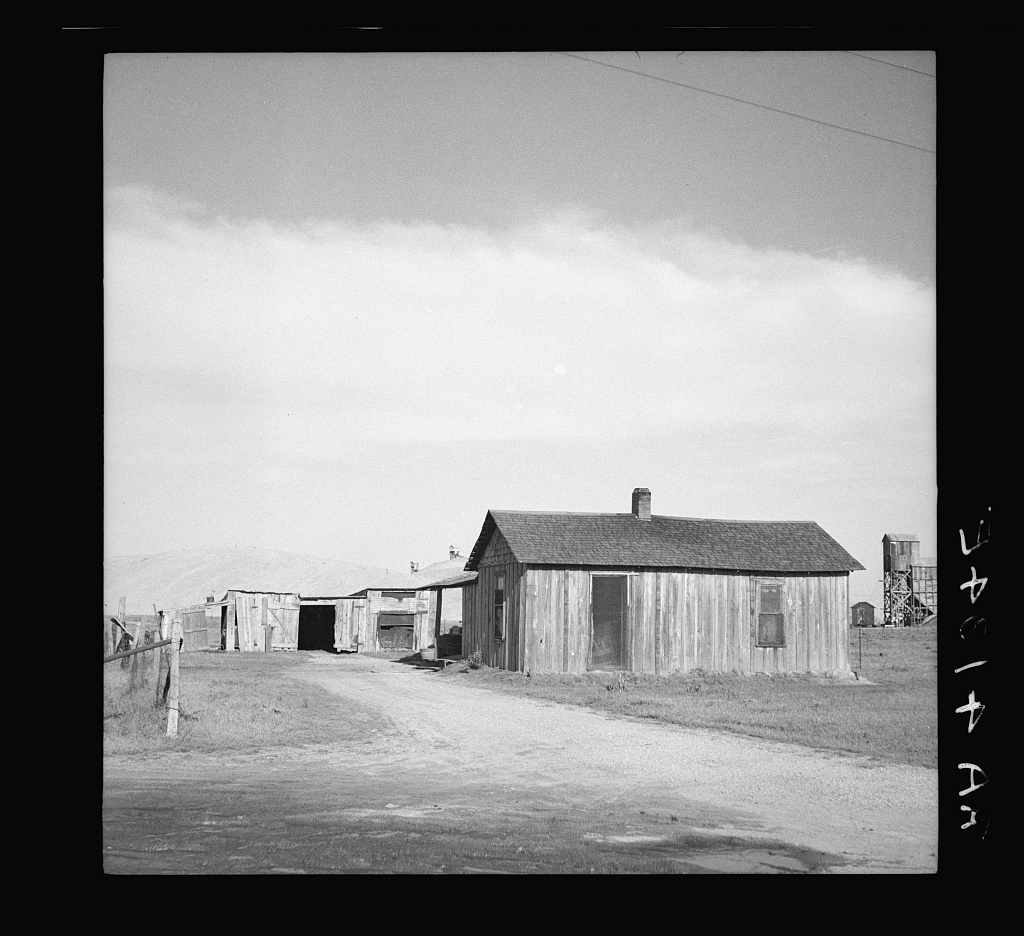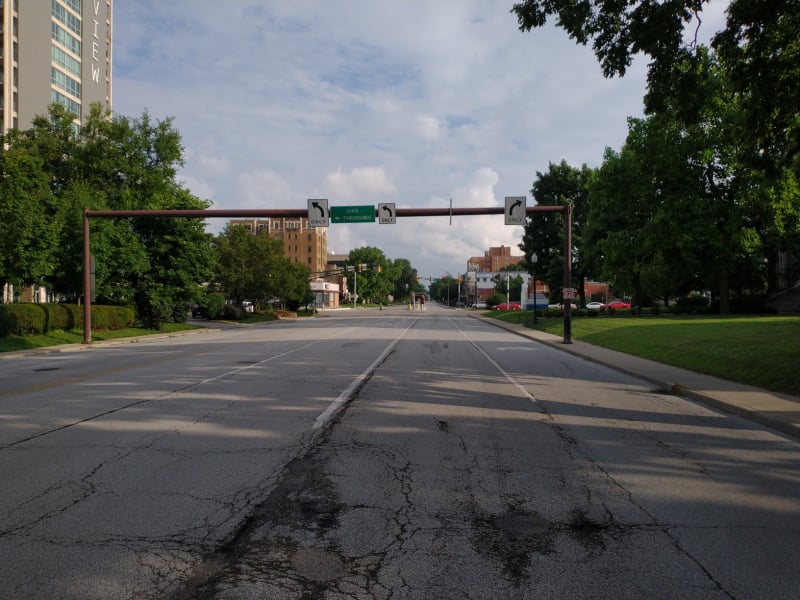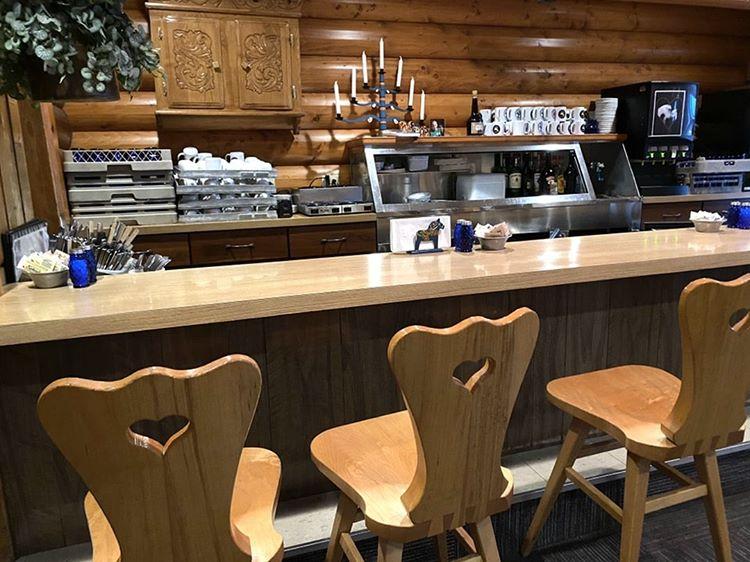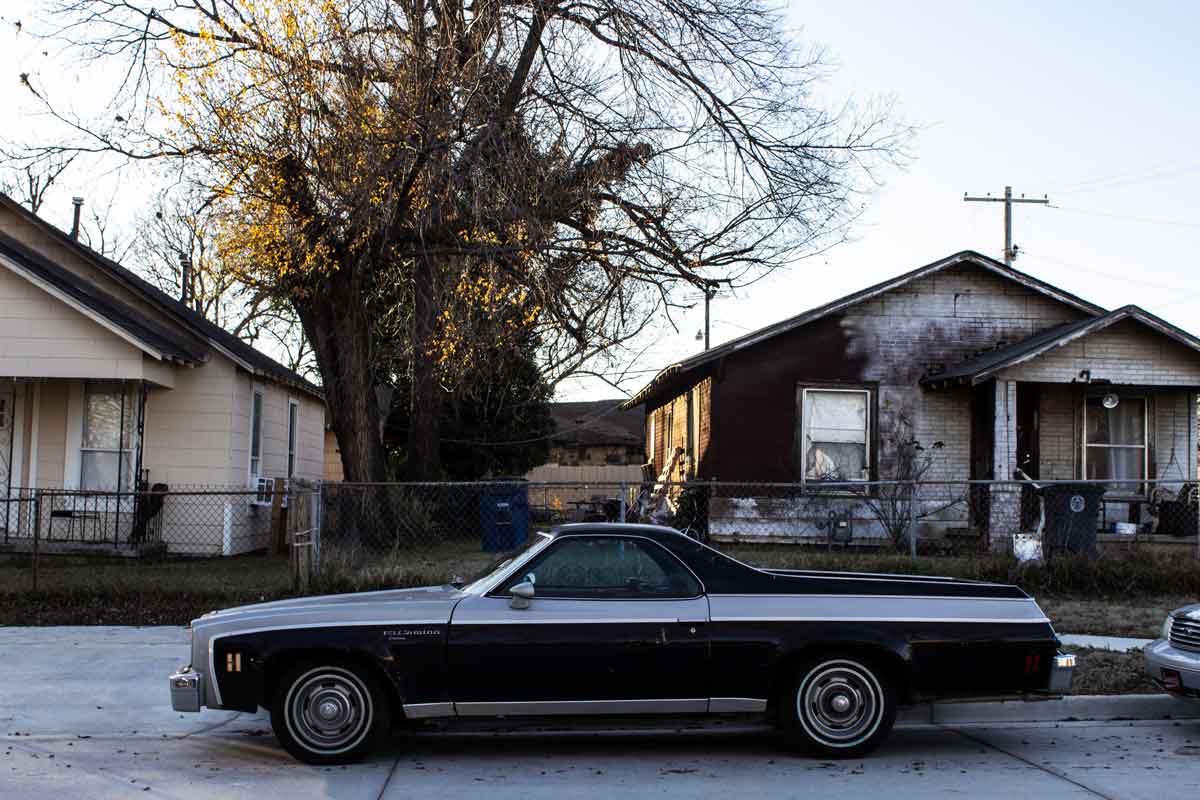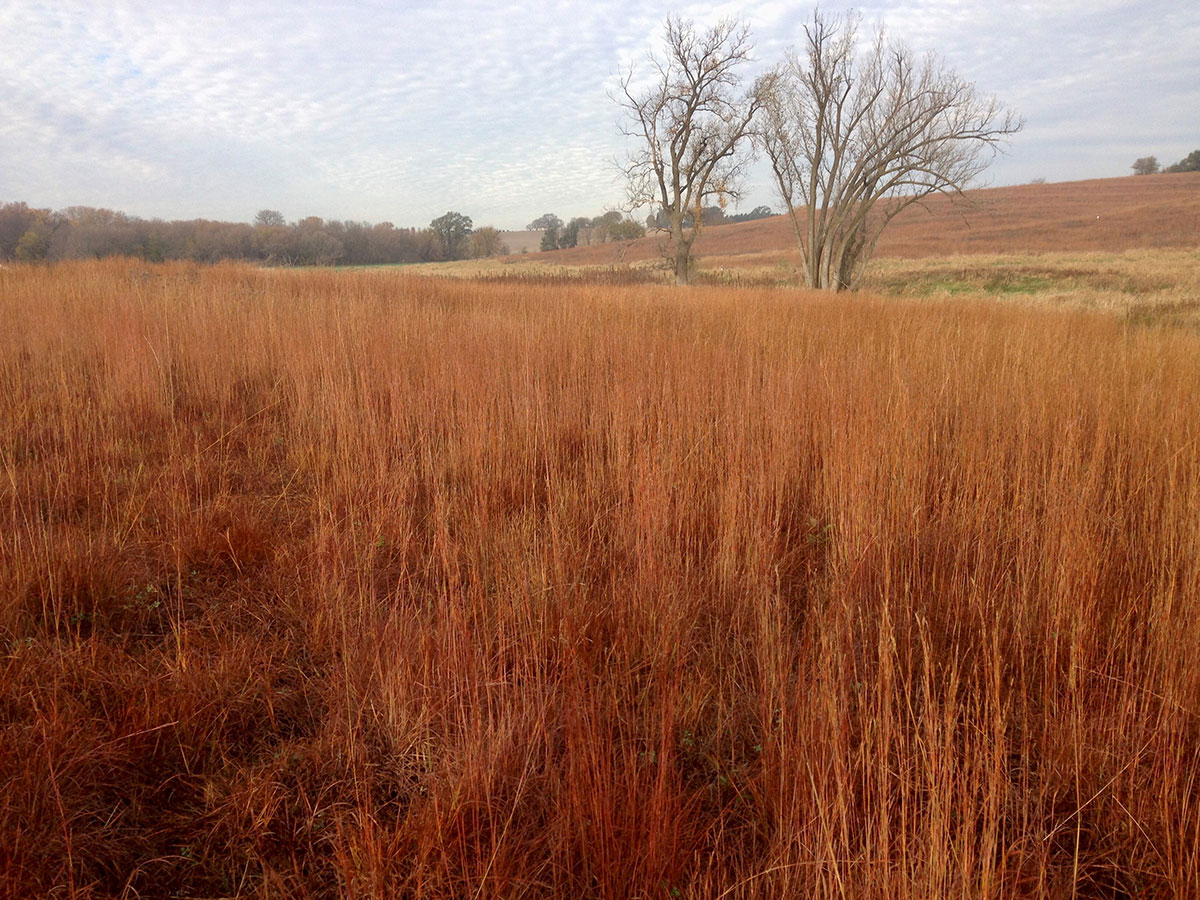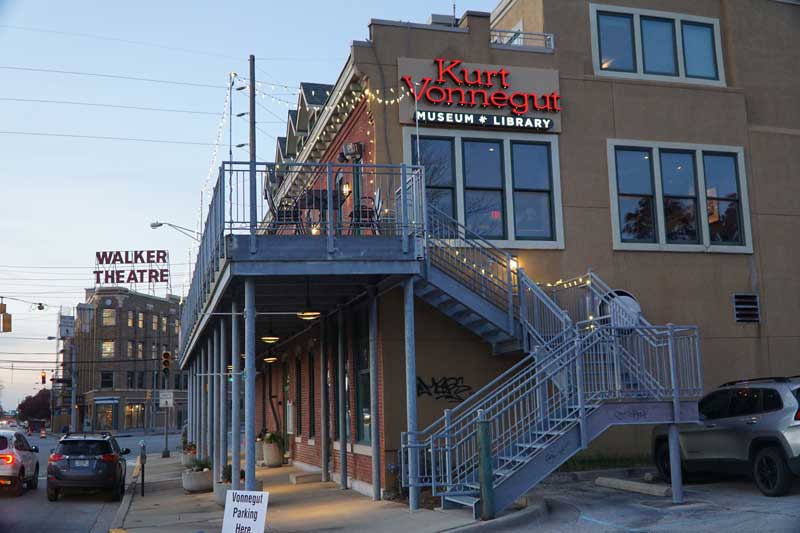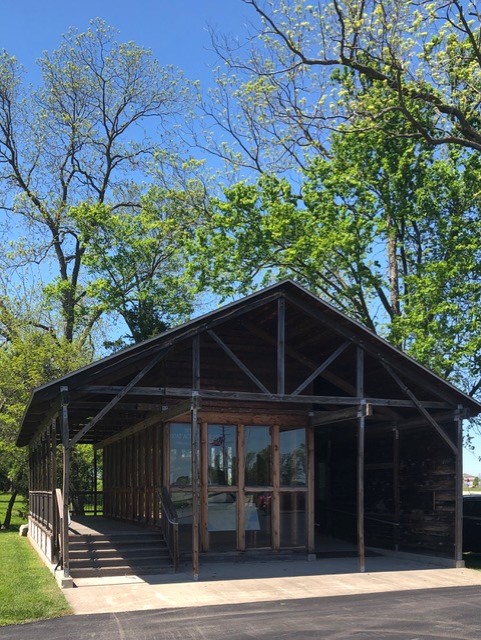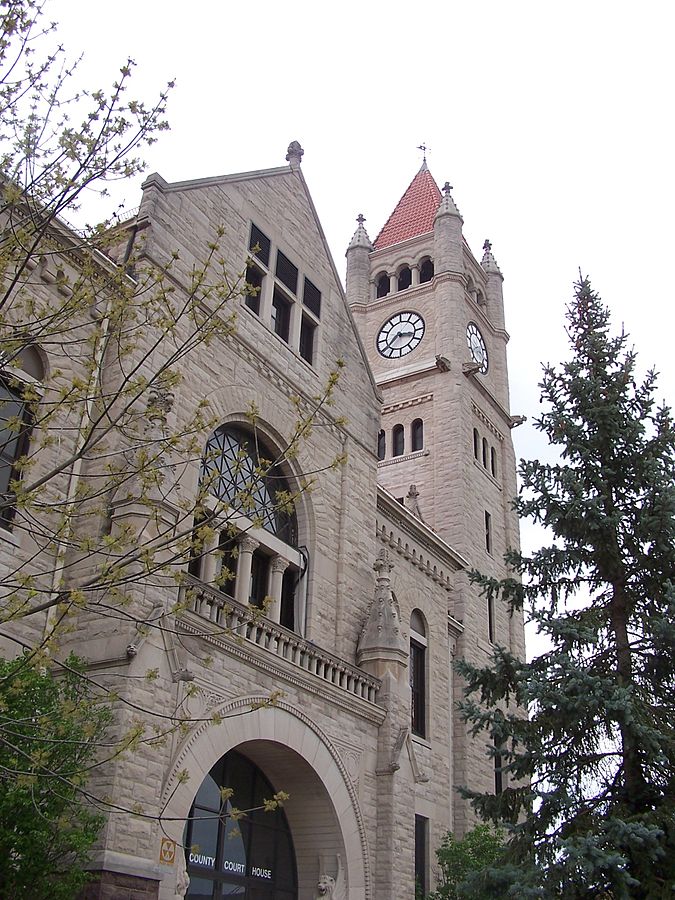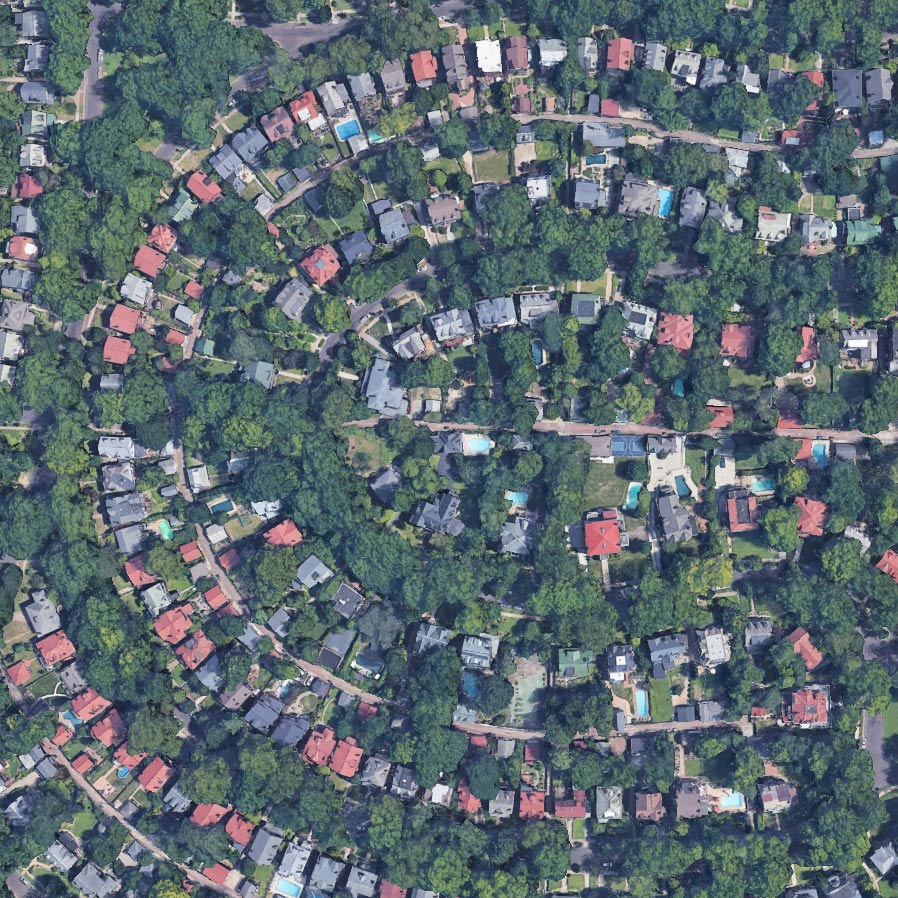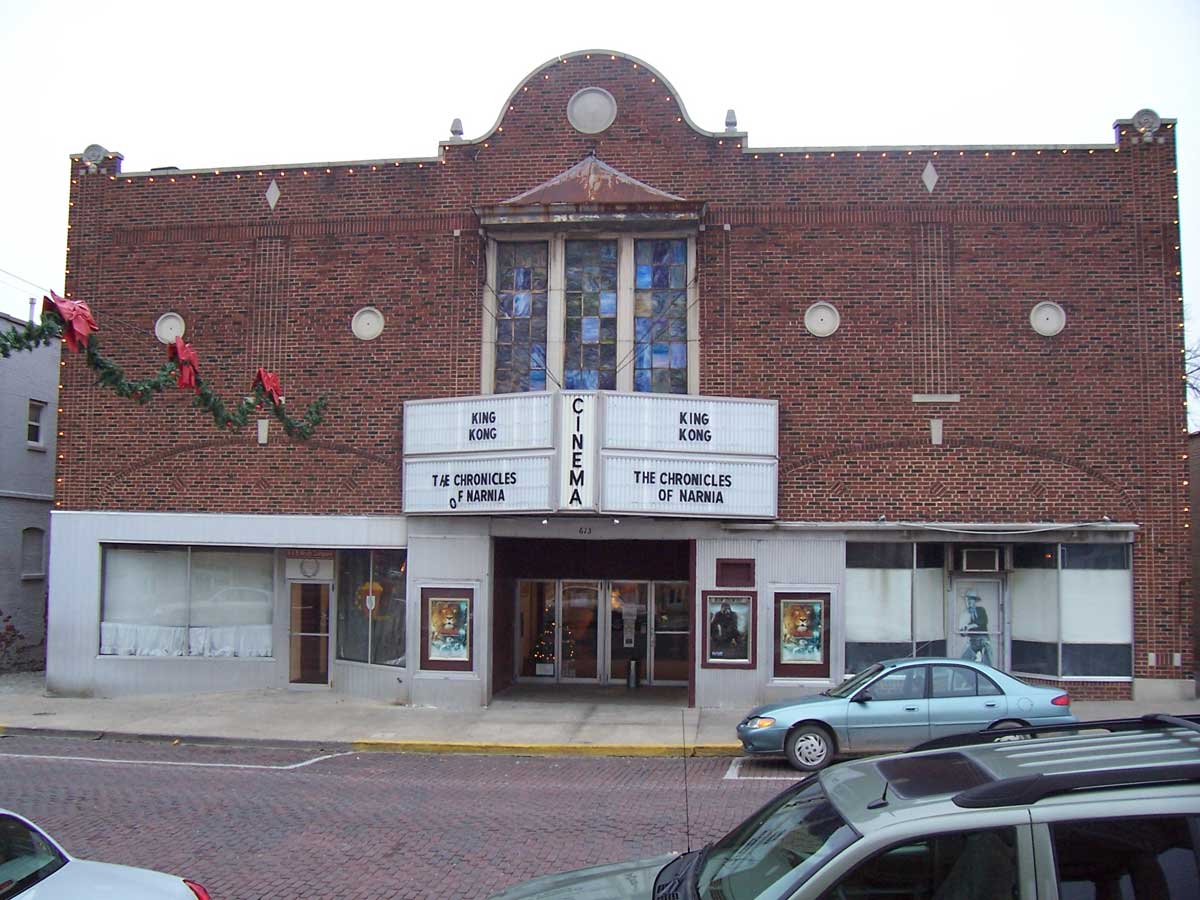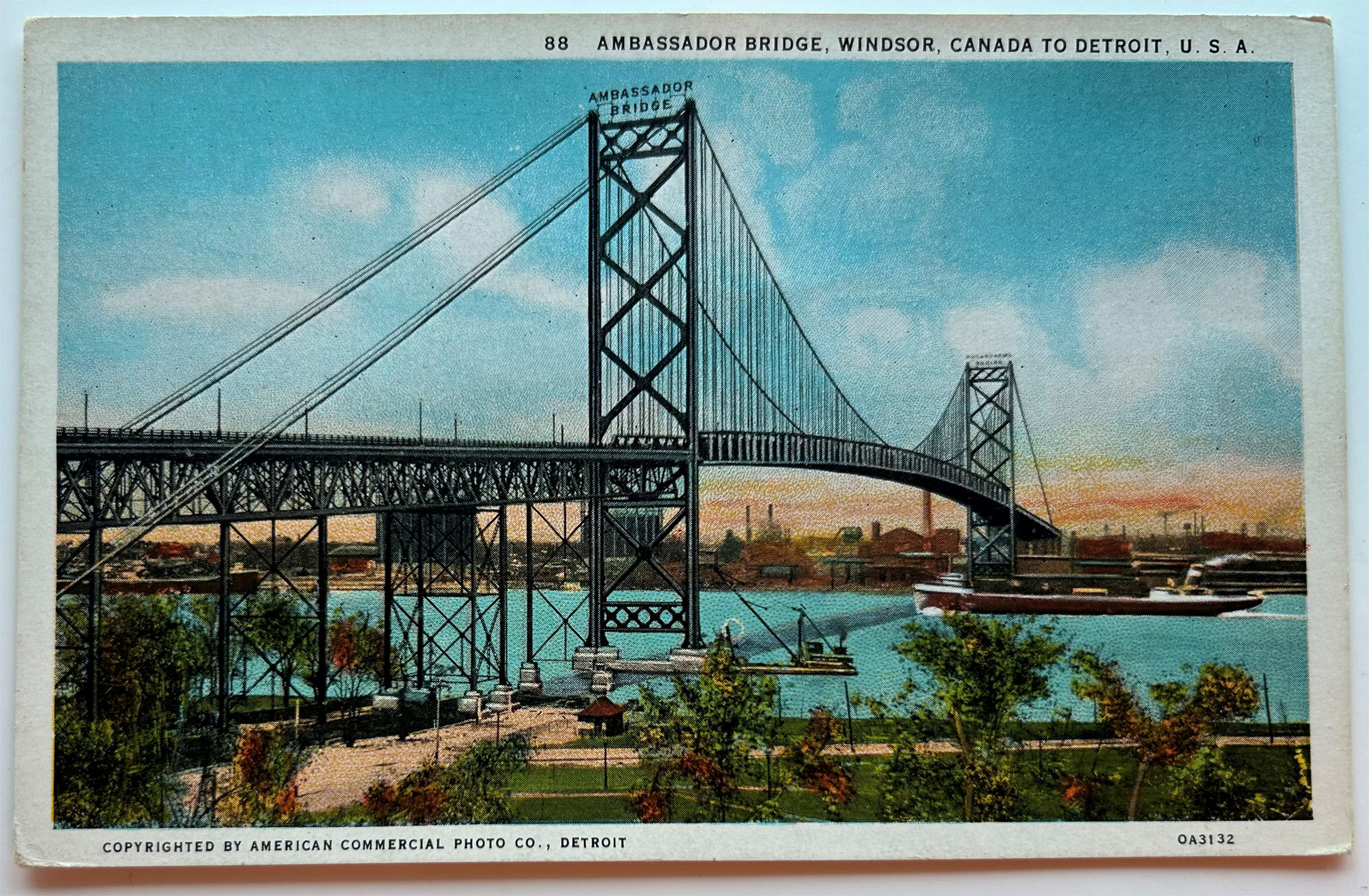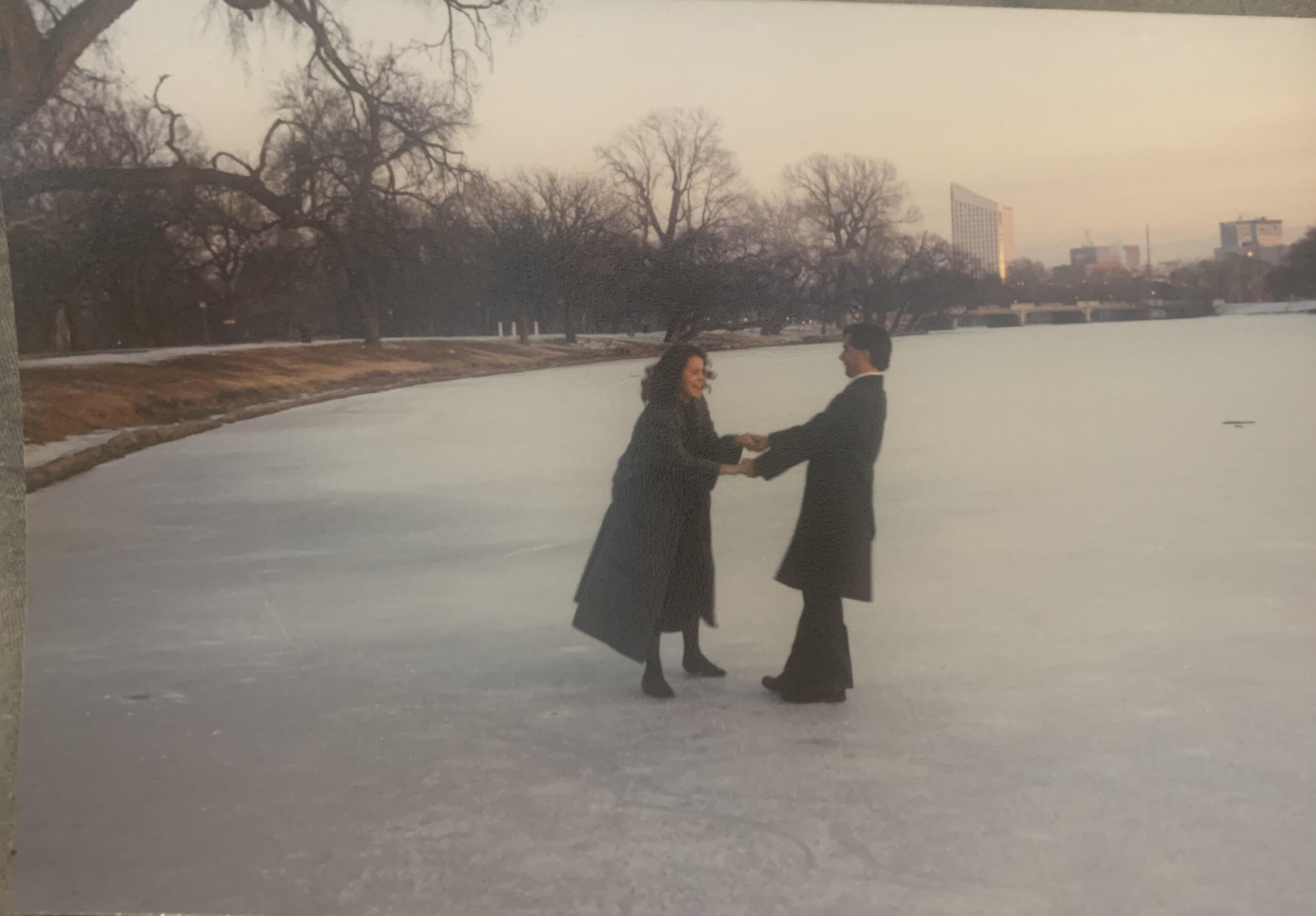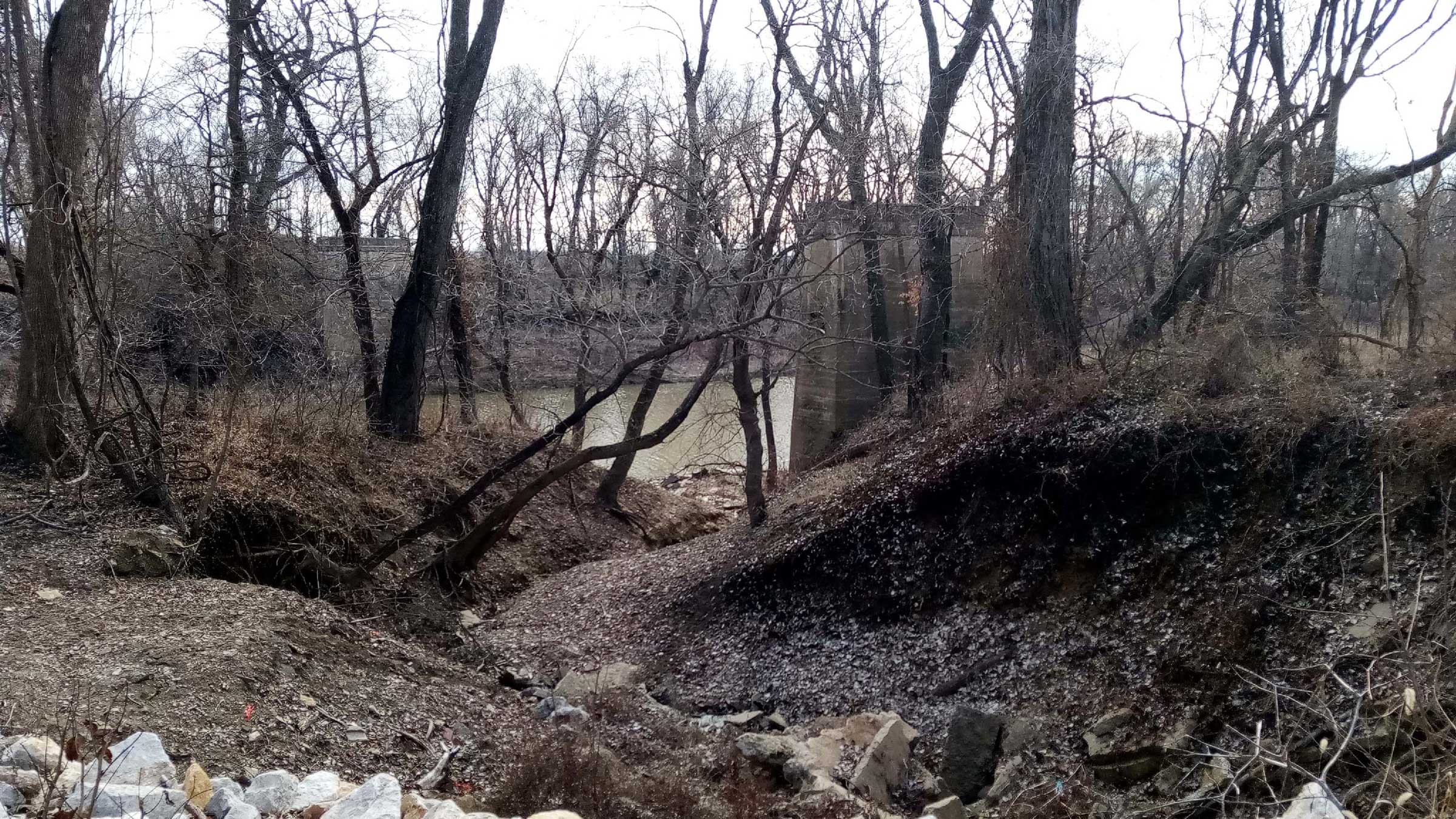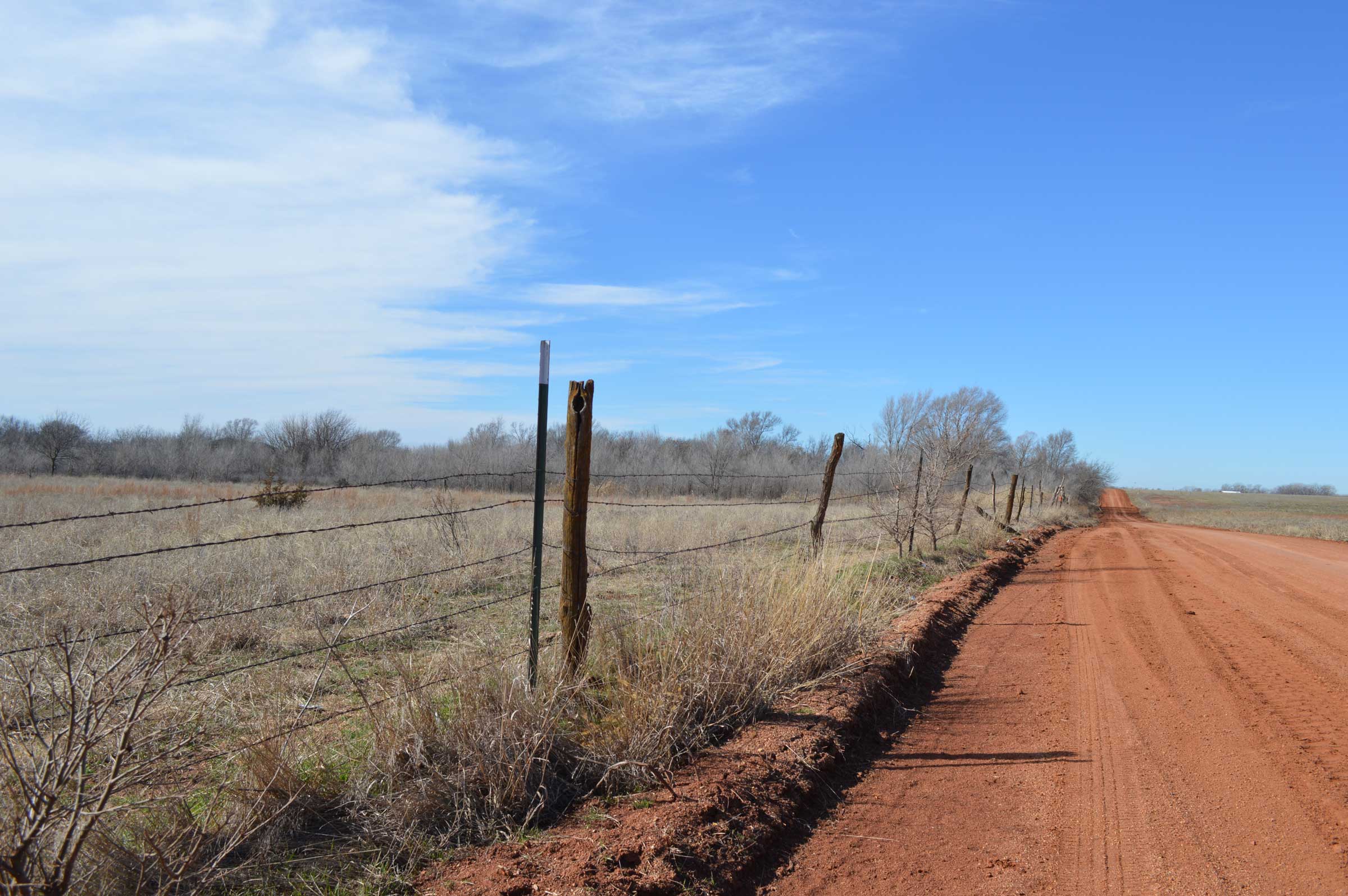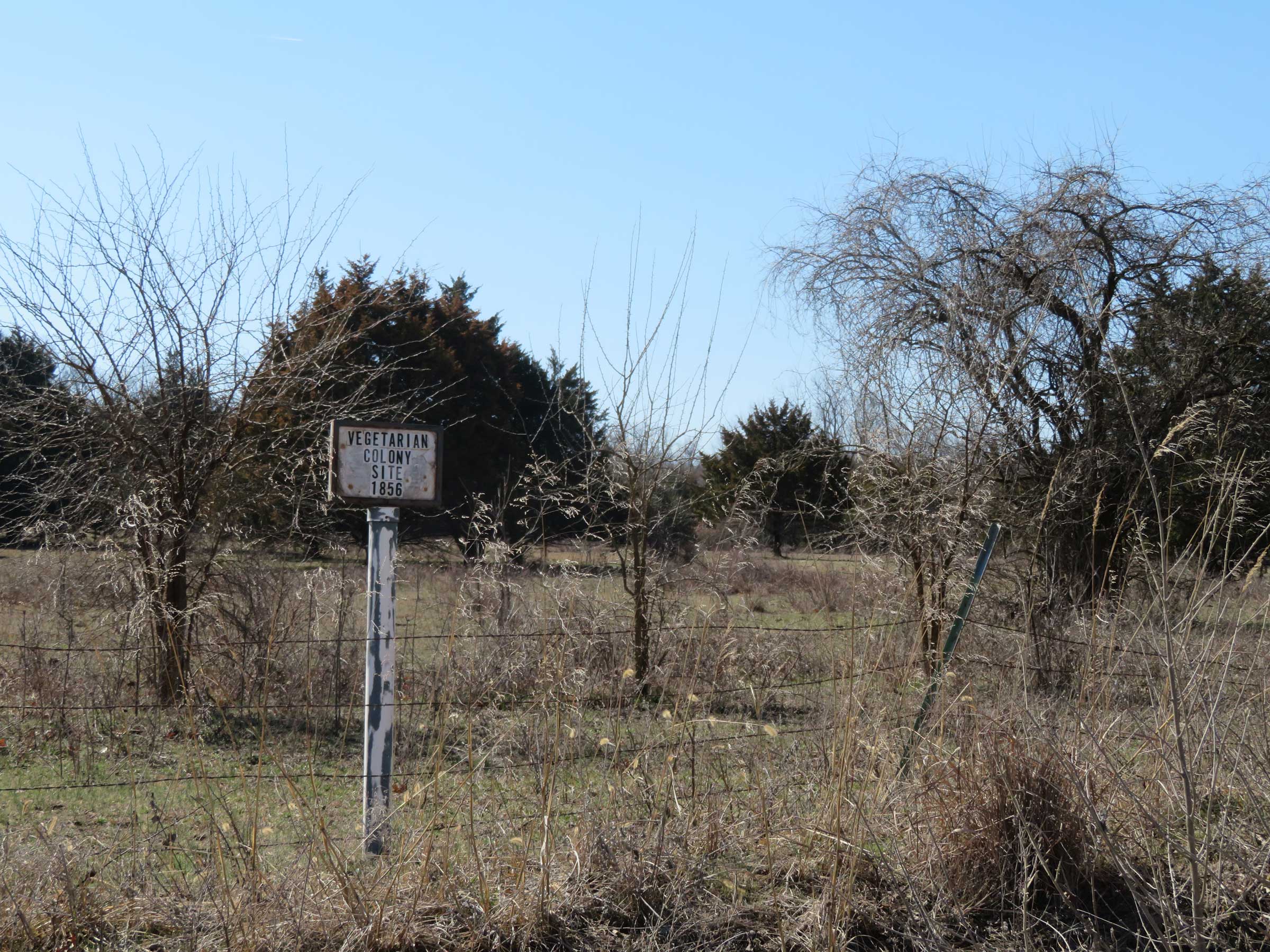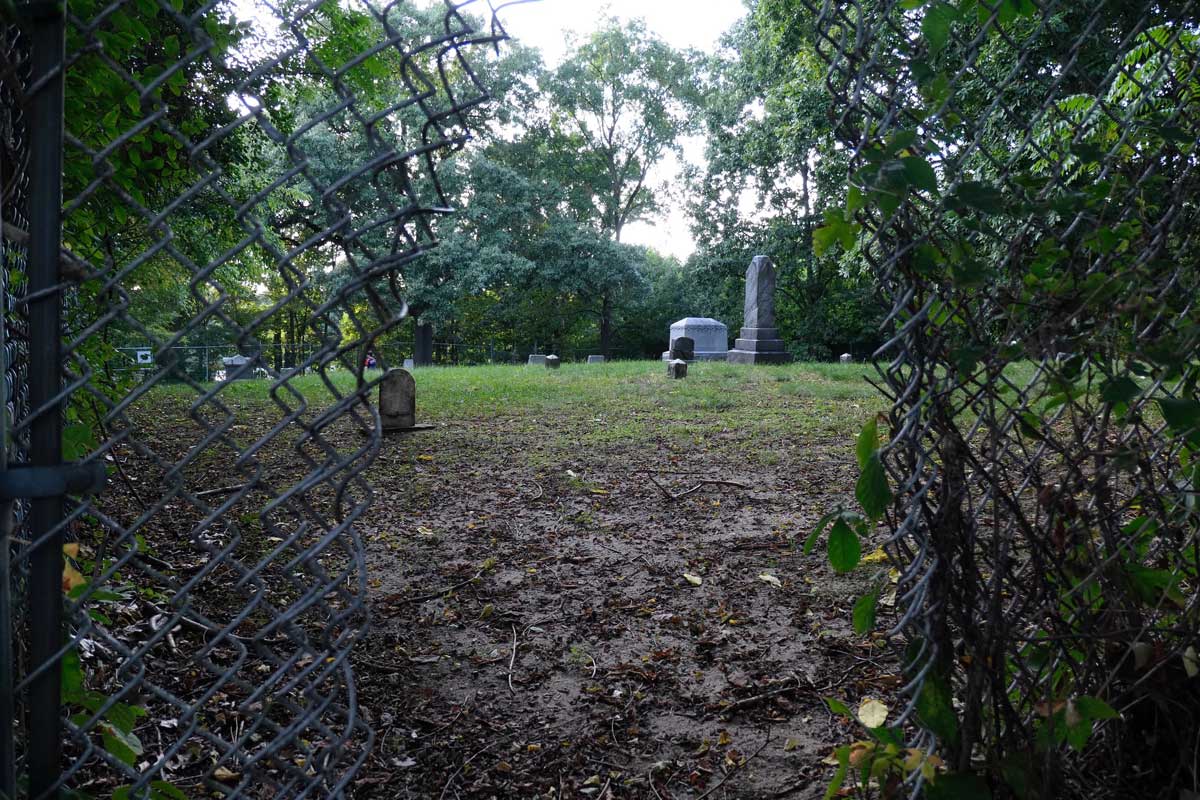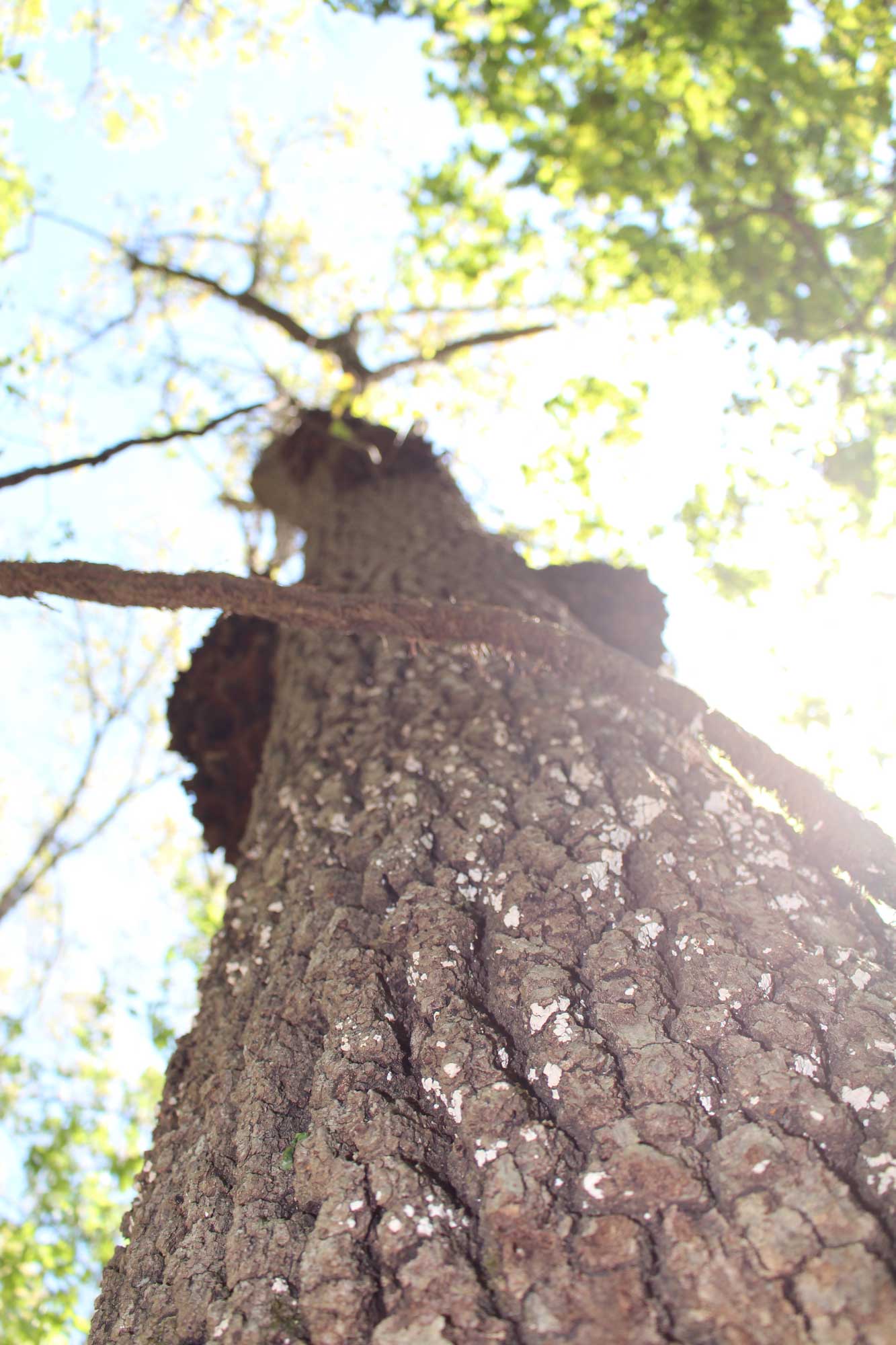Michael Martone
U.S. Highway 30
LaPorte County, Indiana
By Dawn Burns
“My main interest is in making the ordinary strange and wonderful.” –Michael Martone, interview with David Hoppe, NUVO, 2013
On my basement wall above a small writing desk hangs a three-piece canvas print of Northern Indiana farmland with U.S. Highway 30 in the background. The picture’s not much to look at, yet when I found this triptych of ordinariness in a Lansing, Michigan, thrift store, I was overcome with wonder, feeling I knew the exact location — 4494 W. U.S. Highway 30, Hanna, Indiana, 46340 — an address as precise as my memories are approximate. An address to which I could mail a postcard because it once was my home.
Growing up, I watched all manner of vehicles drive by the intersection of U.S. 30 and County Road 450 West from my upstairs bedroom window. Traffic sped by in both directions as eternally as bread slices fall away from the giant Sunbeam loaf at 350 Pearl Street in Fort Wayne, the city 92 miles east where extended family lived and where Michael Martone was born on August 22, 1955, in St. Joe Hospital, one week shy of 18 years before me and, as he notes in Brooding (2018), in “the same year as . . . the commencement of the Interstate Highway System.”
Michael Martone in fours, like the four squared corners of a county township, like how Indiana looks flying over, like he writes in “The Flatness” (2000), a grid inscribed into the skin of the Midwest which “transmits in fields and waves,” which “is a place of sense”:
| Michael Martone whose parents were Tony and Patty, whose brother is Tim, who grew up both in his mother’s freshman English class at Central High School and in Fort Wayne’s North Highlands neighborhood, a “truly high ground in a flat land … where all the tv and radio towers are,” he told me. | Michael Martone who, across from his maternal grandparents’ home at 1811 Poinsette Drive, played baseball and went sledding in Hamilton Park — a trash pit before it became a park —where, in summer, he says, such artifacts as “old bottles, screws and nails, cans, batteries” would emerge at his feet. |
| Michael Martone who was declared “Bard of Fort Wayne, Indiana” on June 1, 2020, a day forever marked as Michael Martone Day, the proof existing on a proclamation stamped with an official gold seal and signed by Mayor Thomas C. Henry. | Michael Martone who read, every year, Edith Hamilton’s Mythologies, whose childhood addresses were once 1730 Spring Street, then 1812 Clover Lane, and who makes mythologies out of Fort Wayne, Indiana, and himself. |
Growing up in Hanna, I knew no Michael Martone. Michael Martone’s whereabouts were no concern of mine. When I watched traffic, not once did I conjure a writer from Indiana who wrote about Indiana. Instead, I asked myself four questions: “Who are the people driving by? Where are they coming from? Where are they going? What if they break down?” Sometimes cars did break down and my dad would help. As travelers sat around our kitchen table, I’d hear the answers to my questions. I liked finding out these facts; I also liked daydreaming my own fictions.
I would not meet Michael Martone until 1997 (or was it 1998?) when he visited my Notre Dame MFA cohort of creative writers. By then I no longer lived on U.S. 30 and we did not meet because of unforeseen car trouble. Though I bought his 1990 collection, Fort Wayne Is Seventh on Hitler’s List, I would not fully read it for another twenty years, concerned I might be influenced. Still, simply by publishing a book with Fort Wayne in the title, he’d given me permission to write about Indiana.
No doubt I’ve got my facts wrong about my thrifted picture. I would not stake my Hoosier credibility on the highway being U.S. 30 any more than I would on the landscape being Northern Indiana. About “the flatness,” Michael Martone writes, “They are thinking about Northern Ohio, about Indiana, about the long stretch through Illinois and on into Iowa. It is flat.” My picture could be from any of these states, or none. Who am I to say?
What I’ve long loved about Michael Martone — about all the Michael Martones — is how his writing both secures and blurs, for he makes Fort Wayne and all of Indiana as-real-and-not-real as Art Smith, “bird boy of Fort Wayne,” whom I can read about both on the Smithsonian’s website and in The Complete Writings of Art Smith, the Bird Boy of Fort Wayne (2020).
In Michael Martone’s mythologies, Dan Quayle will always be out snipe hunting, Jacques Derrida will always be eating an Awful Big, Awful Good pork tenderloin at a Winesburg café, and mayonnaise will always be pumped through the Trans-Indiana Mayonnaise Pipeline.
To his mythologies, I add my own. Dawn Burns, in fours:
| My great aunt Mary who once babysat Dan Quayle saying he’d been a good boy as we stood with my grandmother holding Bush-Quayle ’92 signs outside the Huntington County Courthouse, waiting for the vice-president to appear to his hometown crowd. | My dad buying Penguin Point pork tenderloins as we drove through Warsaw, heading home late at night on U.S. 30, needing the comfort of deep-fried breaded pork, shredded cabbage, mayo, and a slice of cheese on a plain white bun. |
| My mom preferring Miracle Whip to mayonnaise for everything — in deviled eggs, coleslaw, and potato salad, on cold meat and fried egg sandwiches — and who’s to say where Miracle Whip comes from? | What do these details say about my family’s particular variation of Hoosierness? Or mine? Do my stories fit on the Indiana grid? What unevenness do I layer onto the topography? |
Of all Michael Martone’s work, Winesburg, Indiana, a 2015 anthology featuring stories by more than two dozen Indiana authors, best illustrates how we patchwork our mythologies together but, like a highway mirage on a hundred-degree day, can never arrive at the places we seek.
When I asked Michael Martone if he’d ever driven from Fort Wayne to Chicago, he said he’d driven “many times up the old Lincoln Highway 30 that parallels the old Pennsy RR to see White Sox games and the art museum and Science and Industry Museum.” “That,” he said, “is why I put Winesburg, Indiana, near there near Columbia City.”
Funny to find out at last the happenstance of how Michael Martone came to place Winesburg smackdab in familiar family territory for me, my eight sets of aunts/uncles/cousins radiating out across Indiana from my two sets of grandparents — Burns and Tschantz — in Whitley County, my own nuclear family of four the satellite flung out furthest to that rental home at the corner of U.S. 30 and 450 West where a postcard can no longer go, the abandoned house long gone, burned for firefighting practice by the Hanna Township Volunteer Fire Department in 2008.
I imagine my childhood home ablaze, black smoke rolling across all four lanes of traffic, every passerby slowing to notice, only I was not there to watch them from my second story window. I wonder if Michael Martone’s childhood homes still stand. I could find out by asking, but I haven’t. Maybe one day when visiting friends who live near Winesburg I will drive the extra twenty miles to Fort Wayne and find out.
I do not write much at my basement writing desk below the three canvases that, put together, show the height of summer in maybe-Indiana on maybe-U.S. 30. I thought I would, and I’ve tried, but most often I choose my second-floor home office where, if I stand and look out the window, I can view the fence separating my small yard from the backsides of Eastside Lansing businesses and the parking lot which packs full on the weekends for the bars and live music. From my window’s angle, I cannot see the Everybody Reads bookstore from where I ordered Michael Martone’s Plain Air: Sketches from Winesburg, Indiana (2022) from my good friend Scott, but it comforts me to know the bookstore lives beyond my sight.
I like the idea that I wrote this sitting in my basement where the picture transported me away from the sound of the washing machine, the smell of litterboxes, the sight of cinderblock walls surrounding me on three sides. I like the idea, but I don’t like to sit too long where dampness might settle into my skin, like the skin of Indiana where mildew blooms white, strange and wonderful across the landscape of the ordinary.
Dawn Burns is thoroughly Midwestern, having lived her whole life in Indiana, Ohio, and Michigan. Often her characters are Midwestern too, like Evangelina from Elkhart, Indiana, in Evangelina Everyday (2022) who may appear simple and uncomplicated but has a rich inner life. Dawn’s MFA in Creative Writing from the University of Notre Dame prepared her for a lifetime of writing, creative community building, and teaching. Dawn is founder of the SwampFire Retreat for Writers and Artists, and a recipient of excellence awards from the Society for the Study of Midwestern Literature and the Ohio Arts Council. An assistant professor at Michigan State University, Dawn is committed to writing and storytelling as acts of personal and social change both in and beyond her First Year Writing classroom. You can find Dawn at dawnburns42.com.

